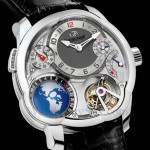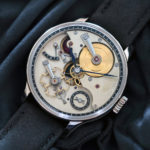The Best Watches for Summer 2025
Something for everyone.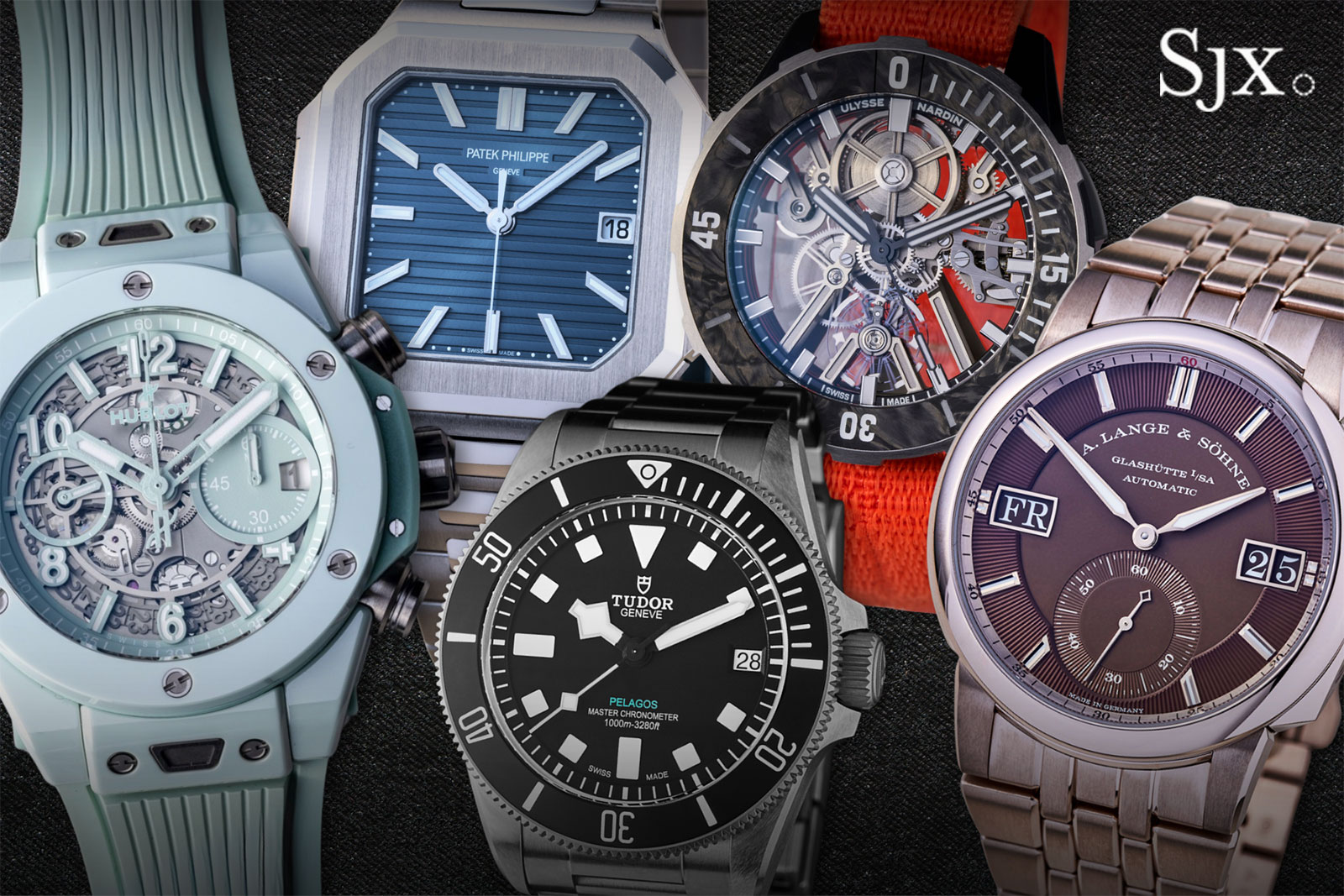
As the summer holidays begin for many collectors around the world, we take a look at some of the standout summer-ready watches released in the first half of 2025.
While there’s no formal definition for what constitutes a ‘summer watch’, we focused on models that are robustly built and expressive in their designs, colours, and materials. With options ranging from just US$1,850 to over US$400,000, our list will have something for almost everyone.
Under US$5,000
First up on the budget end of the spectrum is the TAG Heuer Formula 1 Solargraph, which comes in a variety of colours and materials. Affordably priced thanks to its set-and-forget solar-powered quartz movement, the Solargraph is the spiritual successor to the brand’s iconic Formula One collection, which debuted in 1986. The launch of the Formula One collection was a turning point for the brand, which had recently rebranded as TAG Heuer following TAG Group’s acquisition of then-struggling Heuer.
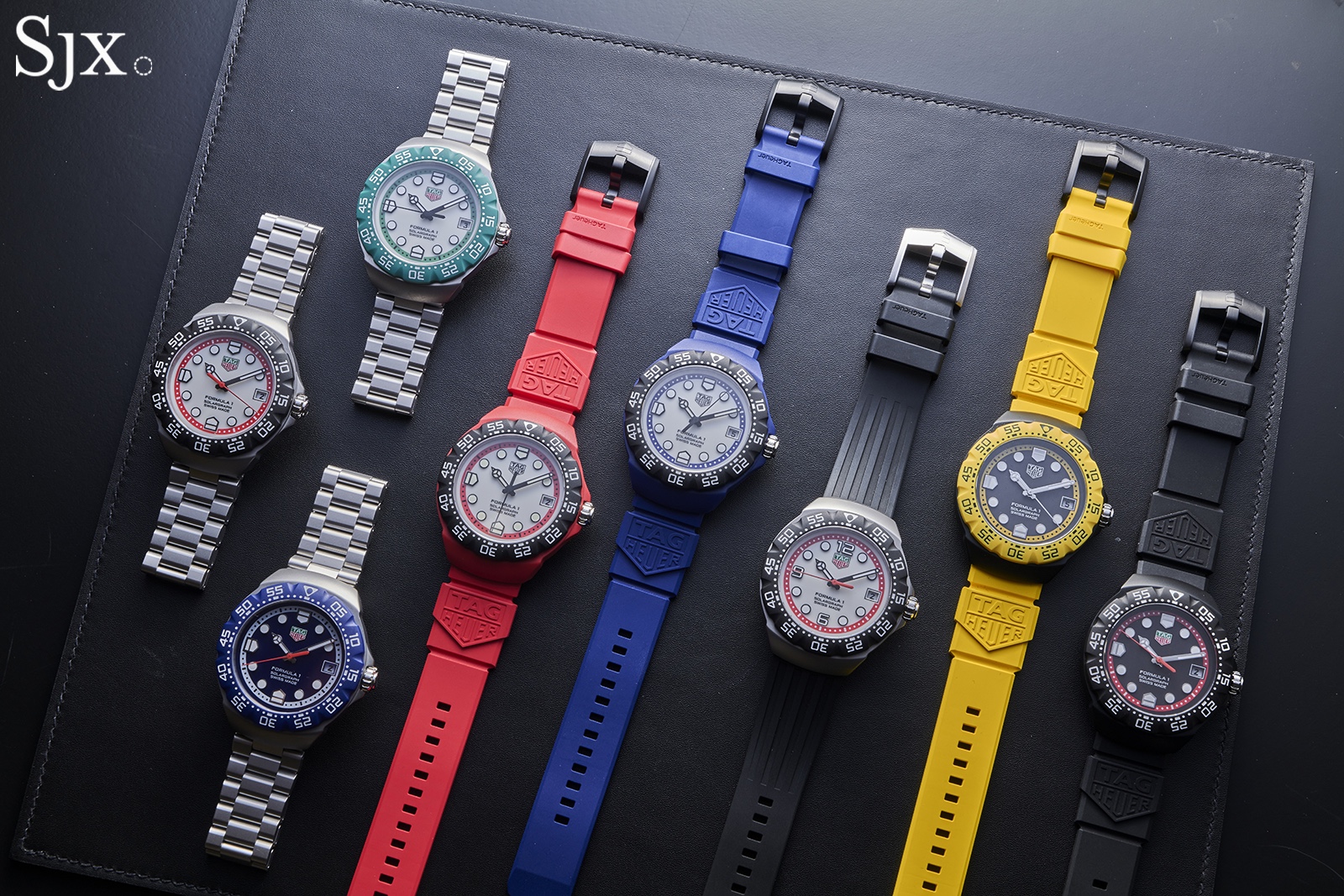
The Solargraph is available in several colourways, and sits easily on the wrist thanks to its 38 mm size and 9.9 mm thickness. For the case material, buyers can choose between stainless steel, with brushed or DLC-coated black finishes, or colourful plastic known as Polylight.
All models are rated to 100 m of water resistance, as even the plastic-cased models feature an internal stainless steel case and screw-down steel case back. I’m partial to the red version (ref. WBY1161.FT8086) as it doesn’t take itself too seriously and can be seen as a nod to Heuer’s historical connections to Scuderia Ferrari.
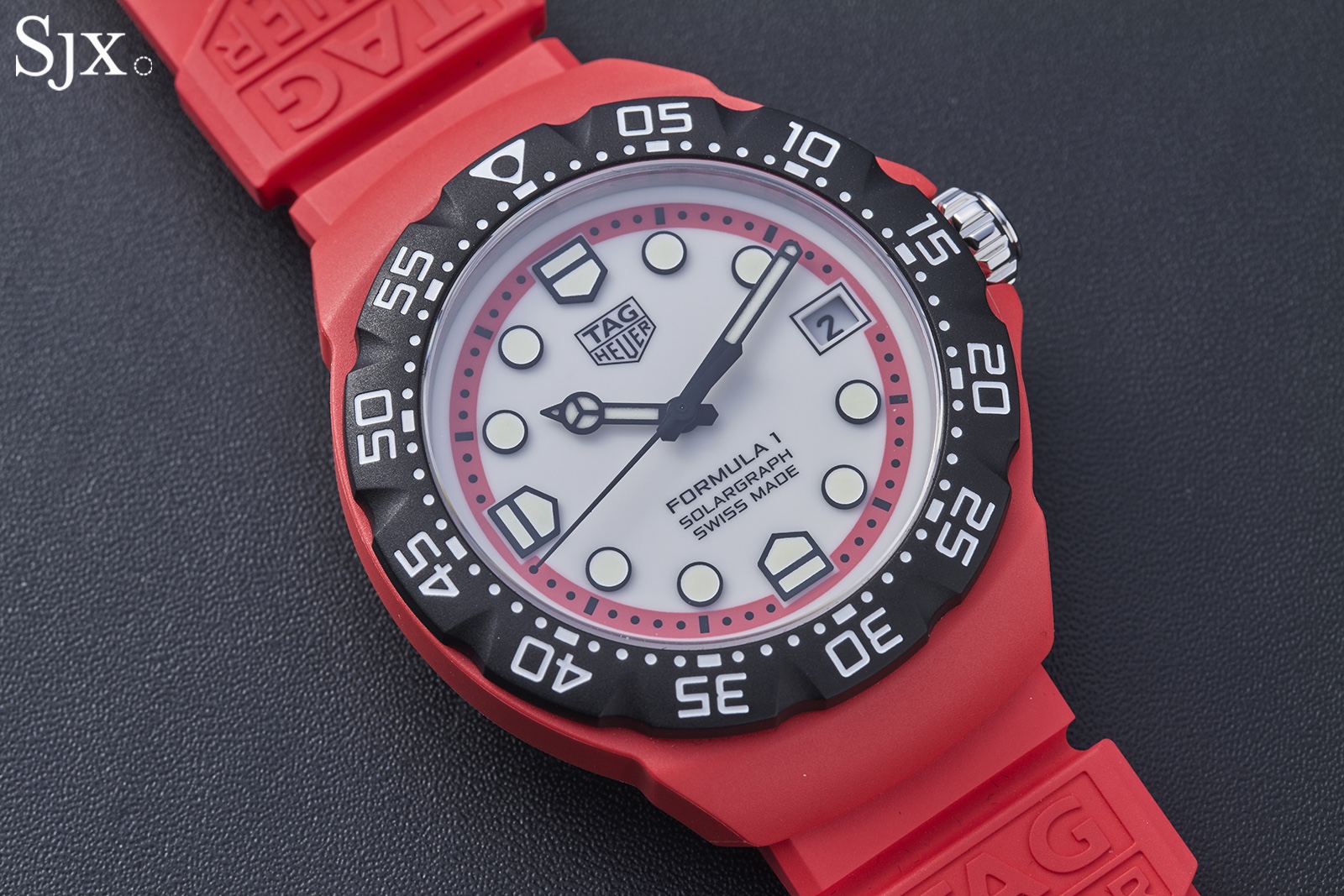
The relaunch of the collection in 2025 also makes sense as TAG Heuer recently reclaimed its position as official timekeeper for Formula 1, and became the first-ever title sponsor of the famous Monaco Grand Prix. Furthermore, with global interest in Formula 1 surging in recent years, the value of the F1 brand has never been higher.
A cynic might point out these watches have little to do with racing beyond the marketing, but Heuer’s ties to the culture of motorsport go way back; under Jack Heuer’s leadership, the company became the first watch brand to sponsor an F1 team back in 1971. These kinds of cultural bona fides are vanishingly rare at the Solargraph’s price point of just under US$2,000.
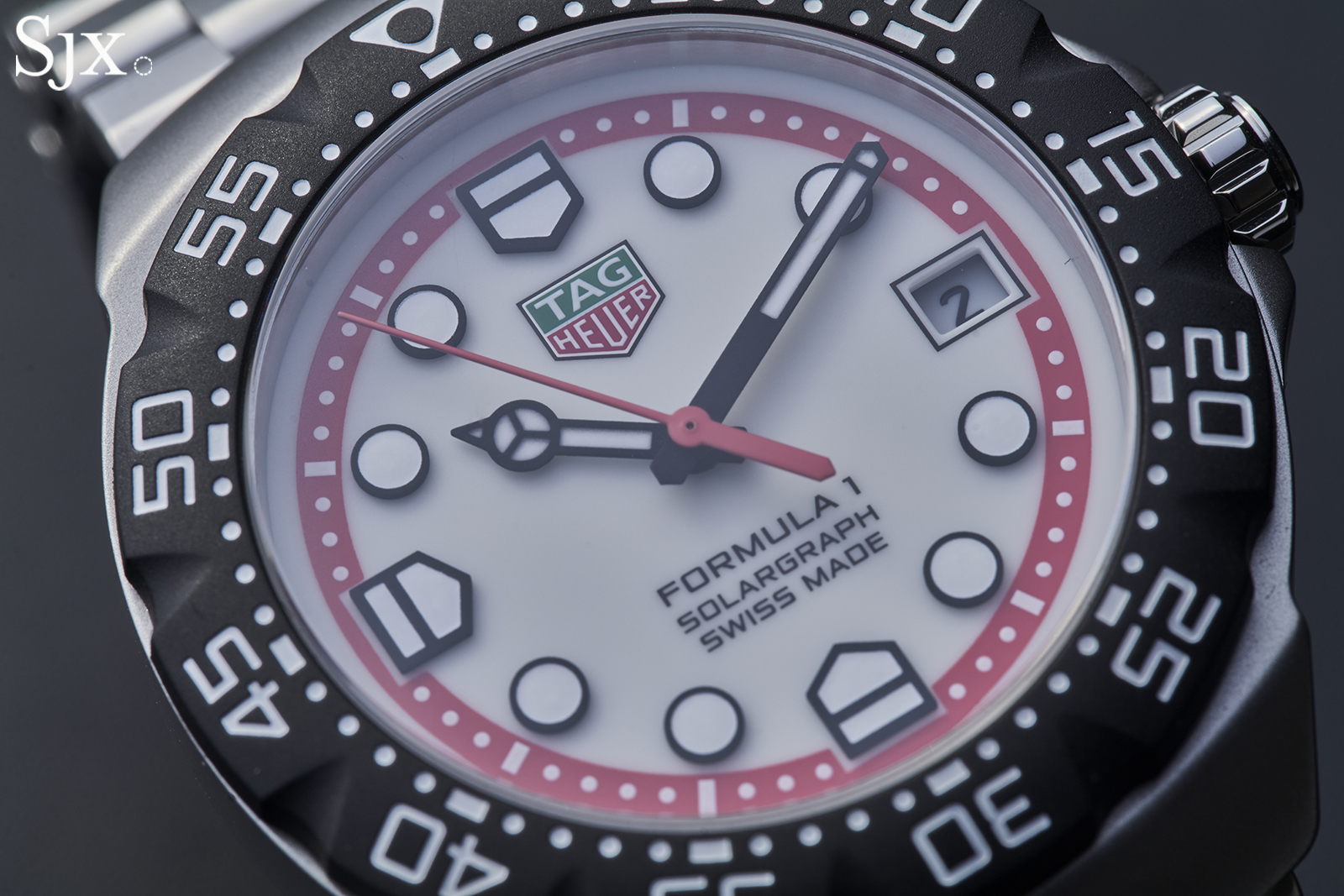
Next up is one of the most surprising watches of 2025, the Christopher Ward C12 Loco. It’s easy to feel jaded about the continued onslaught of integrated bracelet sport watches, but the Loco punches well above its weight, featuring an architectural new calibre and impressive finishing.
The Loco is a big step in the evolution of the Christopher Ward brand, which has been pushing upmarket recently with models like the Bel Canto that defy ‘entry level’ norms for design and complication.
The Loco features a 41 mm stainless steel case and is available on an integrated steel bracelet or a rubber strap. I recommend the rubber, as it’s unusually supple and helps the watch avoid the trap of looking too much like everything else.
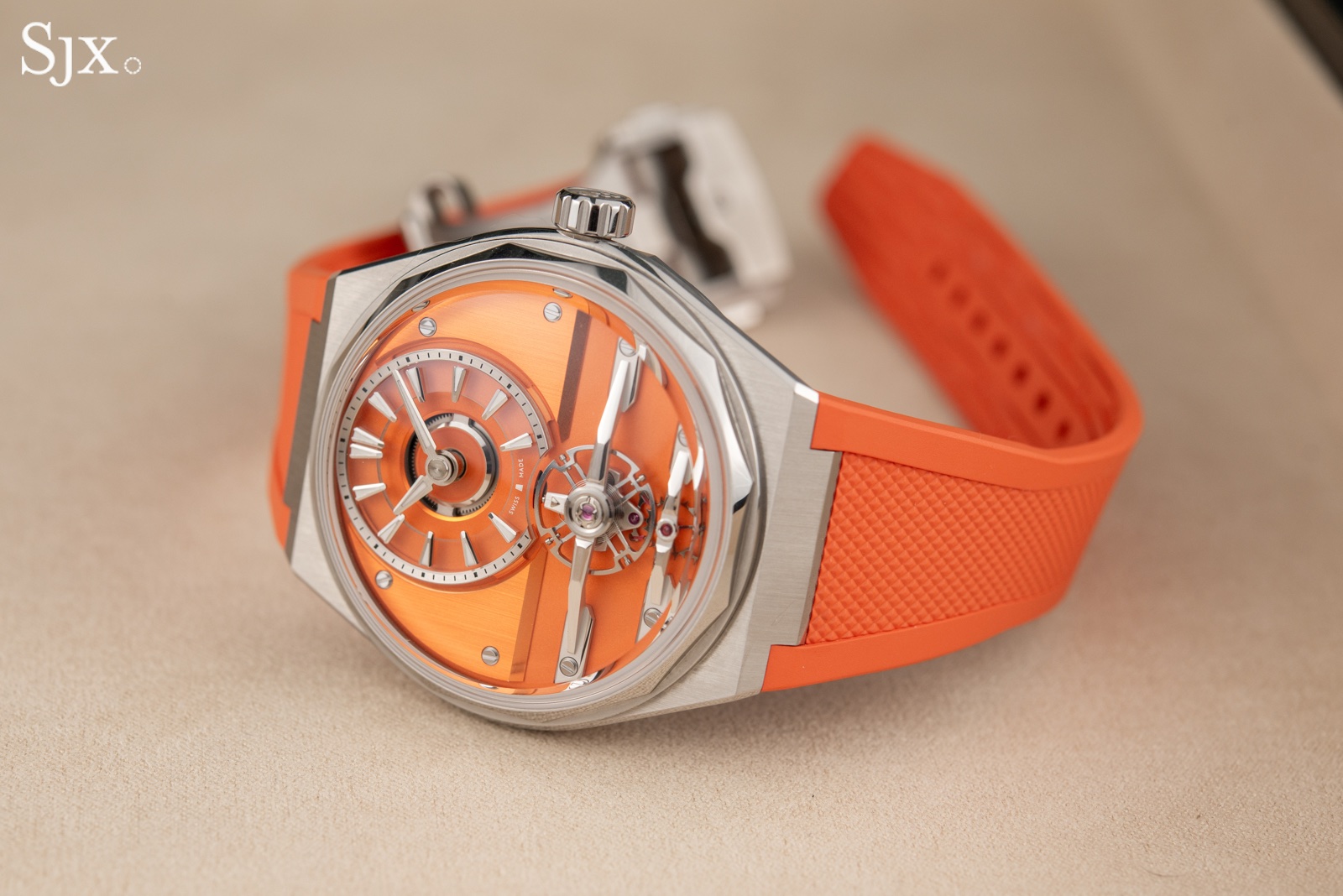
The case is fairly thick at 13.7 mm, but this includes the domed sapphire crystal that sits up high above the case, creating space for the dial-side theatrics. The crystal is also worth mentioning in the context of the meager 30 m water resistance rating, which might seem low for a sport watch.
In fact, the watch features a reassuringly solid screw-down crown and the water resistance is limited mainly by the faceted crystal, which wasn’t engineered for the crushing pressure of deeper depths, but is more than sufficient for the pool or beach club.
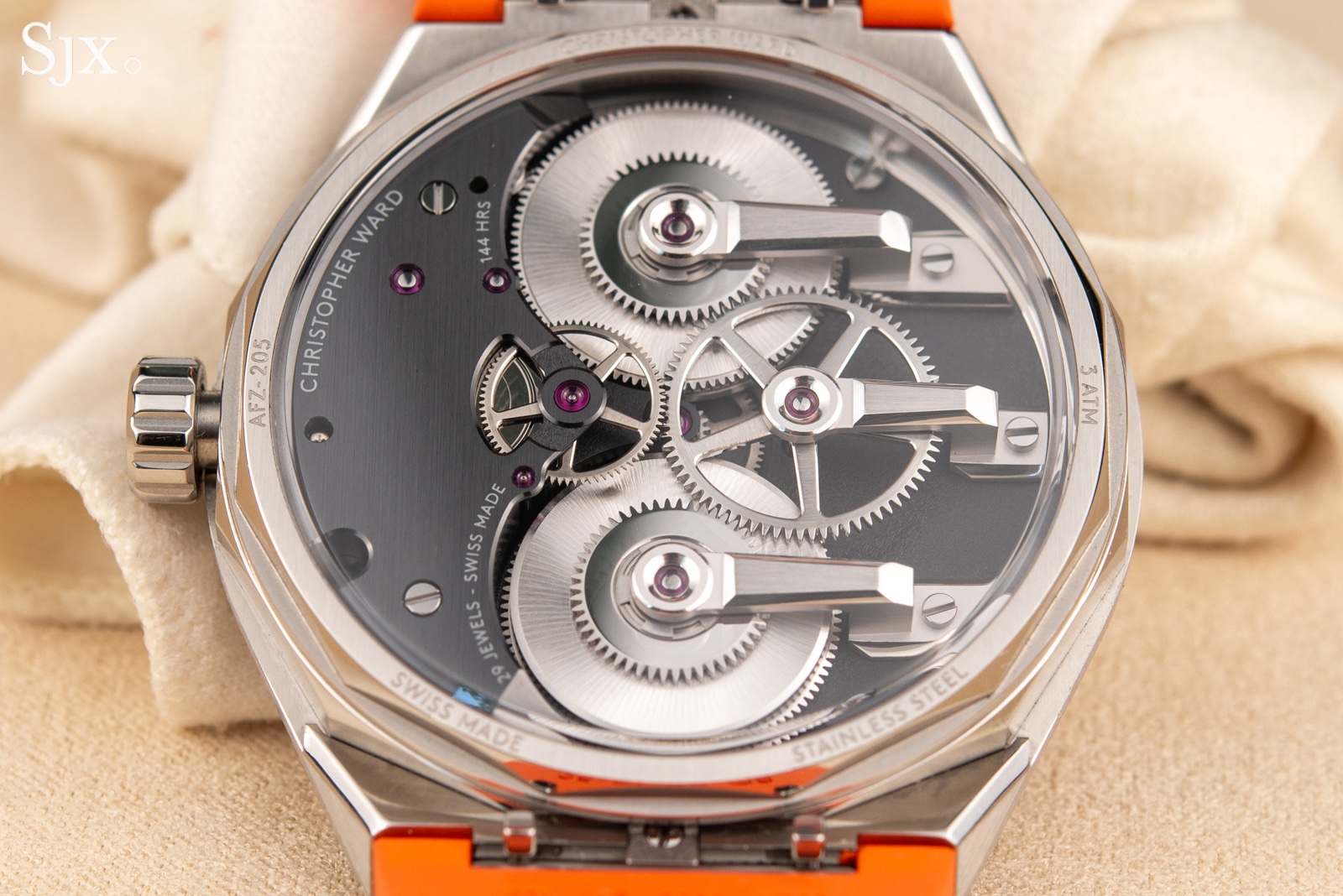
The thickness is well-justified, since the CW-003 movement is quite unlike anything else at the Loco’s price point of US$4,595. The CW-003 is a manually wound calibre with two massive mainspring barrels visible through the transparent case back, which together provide a six-day power reserve.
Flip the watch over, and the brand’s first-ever free-sprung balance brings life to the dial, which displays the hours and minutes on an off-center sapphire display. The movement is not only visually striking, with sculpted steel bridges and cocks supporting the major component groups, but the finishing is head-and-shoulders above its microbrand peers.
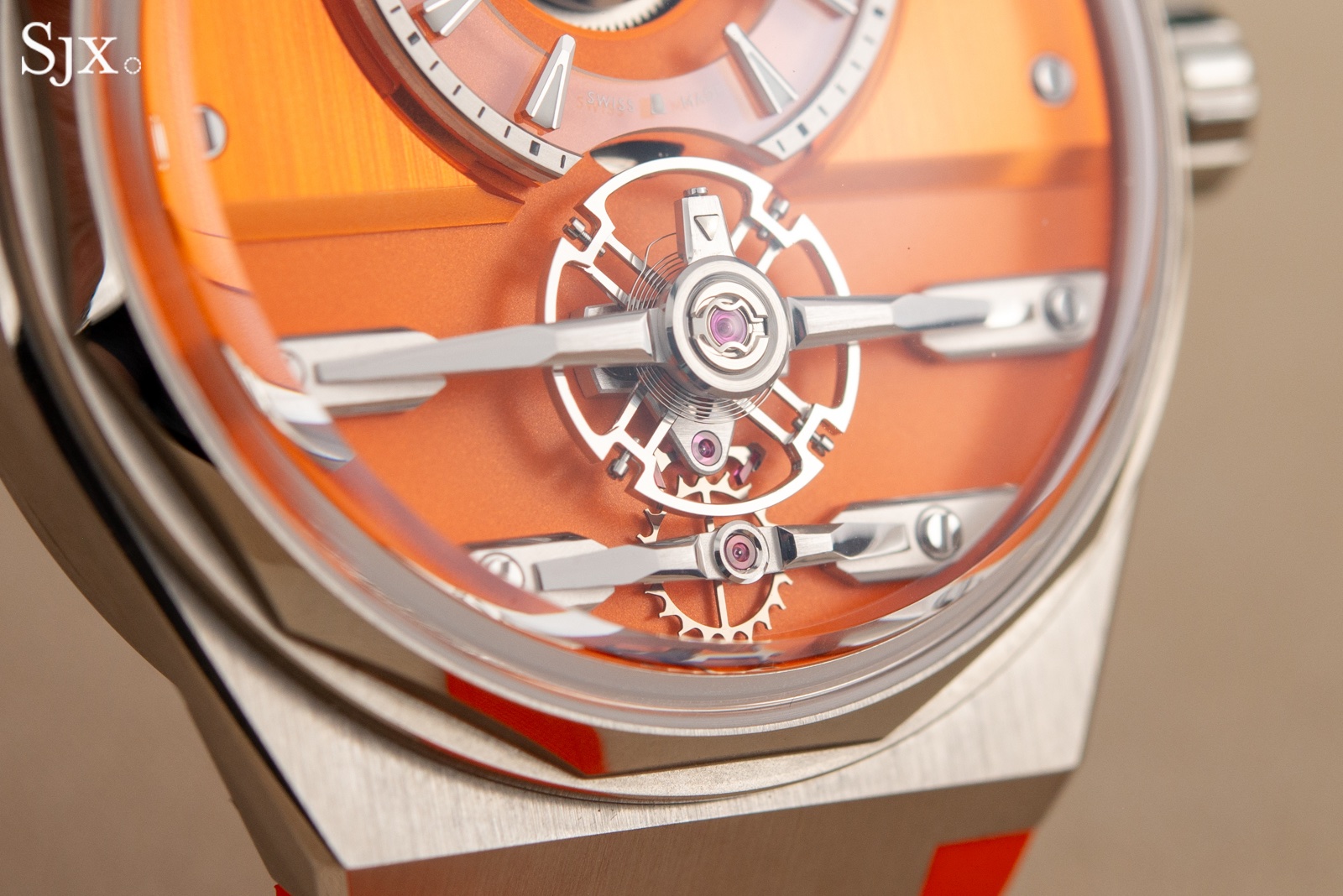
Rounding out the entry level category, honourable mentions go to the Albishorn Thundergraph and the Laventure Marine Type 3, which tap into the notion of ‘imaginary vintage’ in different and interesting ways. The Thundergraph features a novel monopusher chronograph designed by Sébastien Chaulmontet, and the Marine Type 3 references early quartz marine chronometers for its design, and weighs less than 50 g on its elastic strap thanks in part to its grade 23 titanium case.
Under US$10,000
A step up in price affords access to the Tudor Pelagos Ultra, which is arguably the highest spec dive watch in the brand’s history. Though the title of deepest diving Tudor is still held by the short-lived and little-loved Hydro 1200, the 1,000 m-rated Ultra is powered by a far more advanced in-house MT5612-U movement that carries the Master Chronometer designation. For those who love chunky overbuilt dive watches, the Ultra is an appealing option at US$6,100.
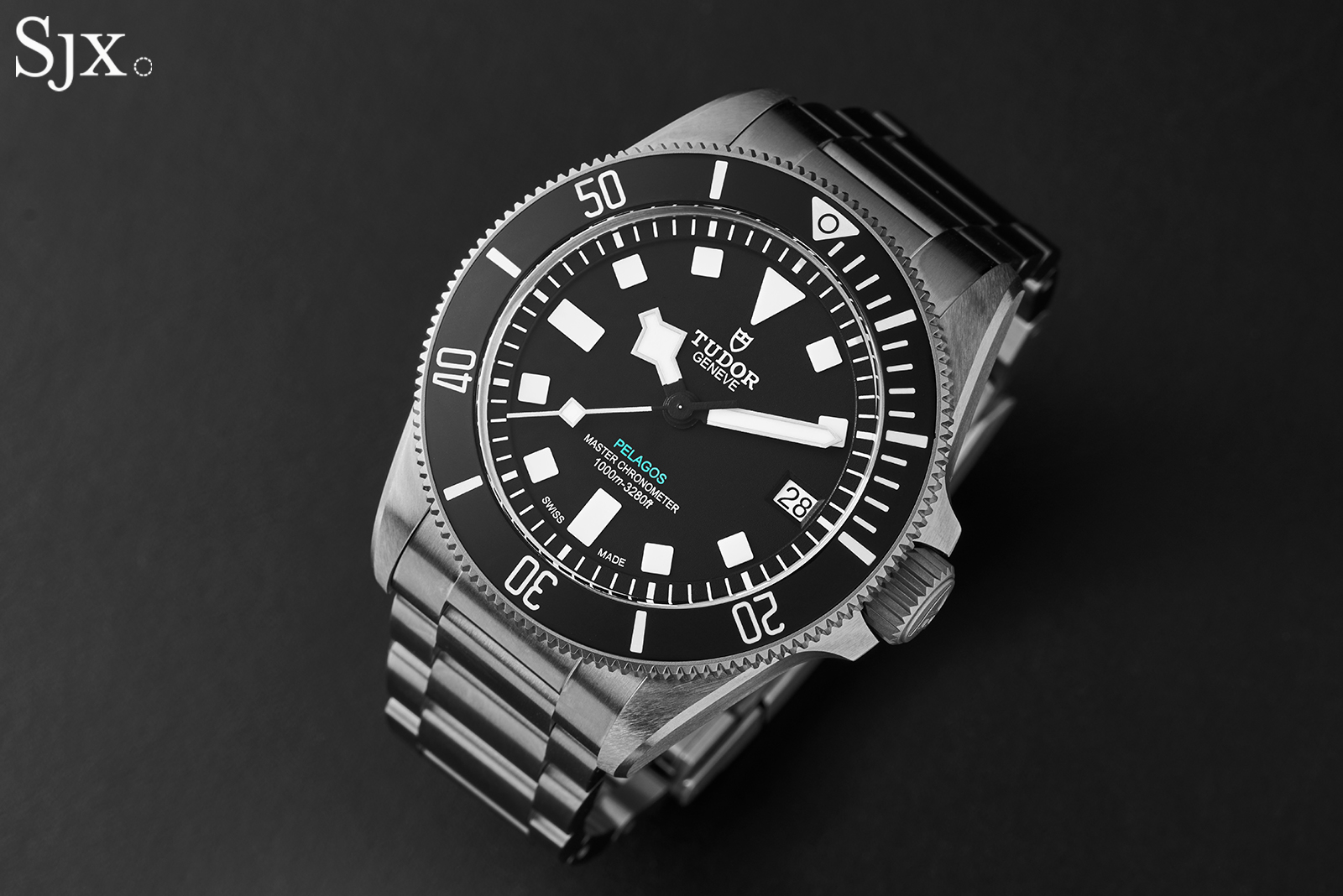
Housed in a fully brushed 43 mm titanium case, the Ultra measures 14.5 mm thick and has the purposeful feel of a precision instrument. This sizing gives the Ultra inherent wrist presence, but the restrained monochromatic design and matte textures keep it from making a spectacle of itself, which tends to be the case with some rivals.
Naturally, it includes all the familiar touches of the Pelagos line: a ceramic bezel, snowflake hands, brushed titanium bracelet, and plenty of lume, including on the adjustable T-fit clasp.
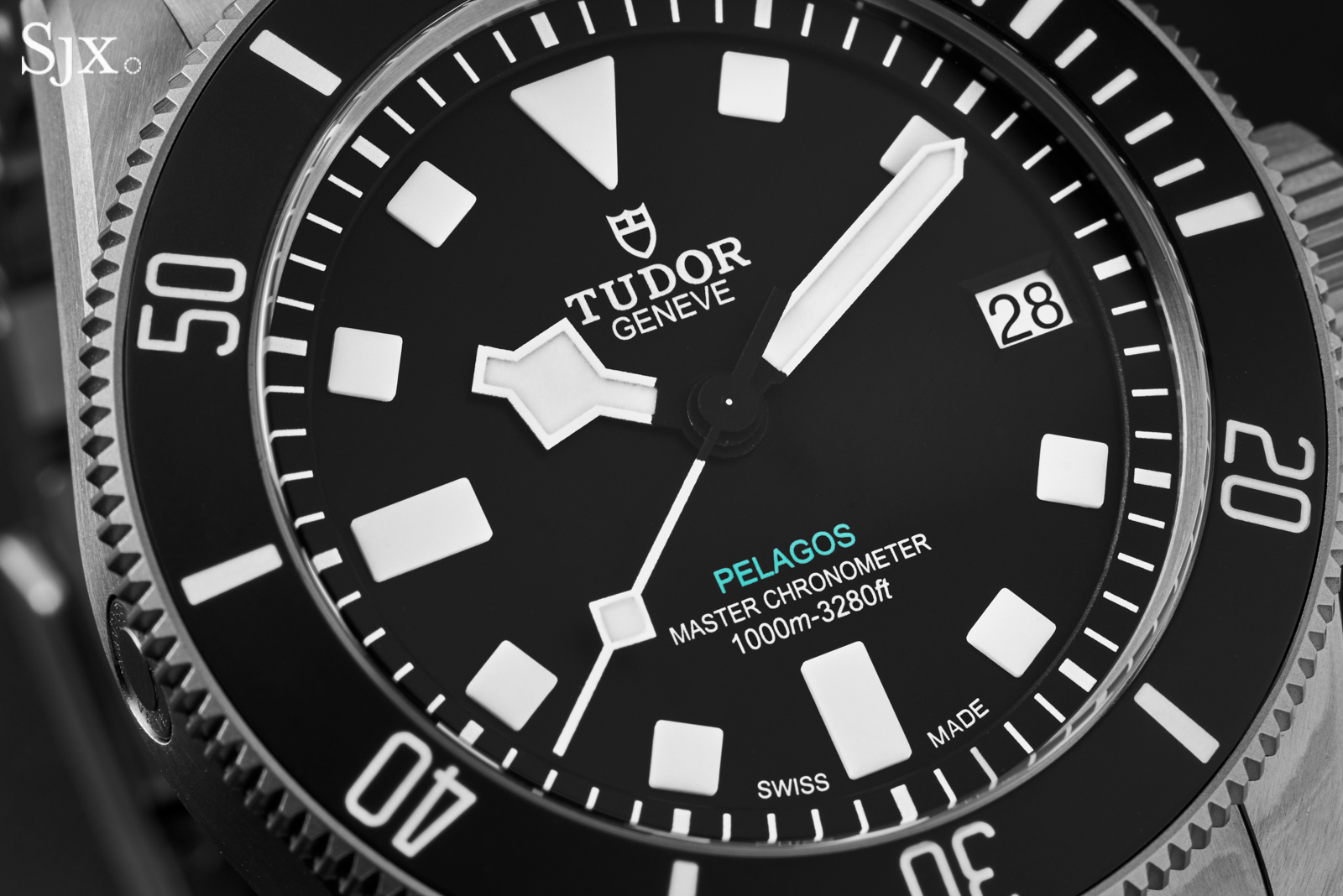
Ceramic is an increasingly popular material in luxury watchmaking thanks to its scratch-resistance and capacity for colour, which makes it easy to look at a watch like the IWC Pilot’s Watch Automatic 41 Top Gun Lake Tahoe and think the brand is jumping on a fad, but the facts are more nuanced.
IWC was an early pioneer of zirconium oxide watch cases as far back as 1986 when the brand introduced the white ceramic Da Vinci Perpetual Calendar Chronograph ref. 3755-05. This lineage gives the brand’s ceramic watches like the Lake Tahoe a degree of historical continuity that latecomers can only dream of.
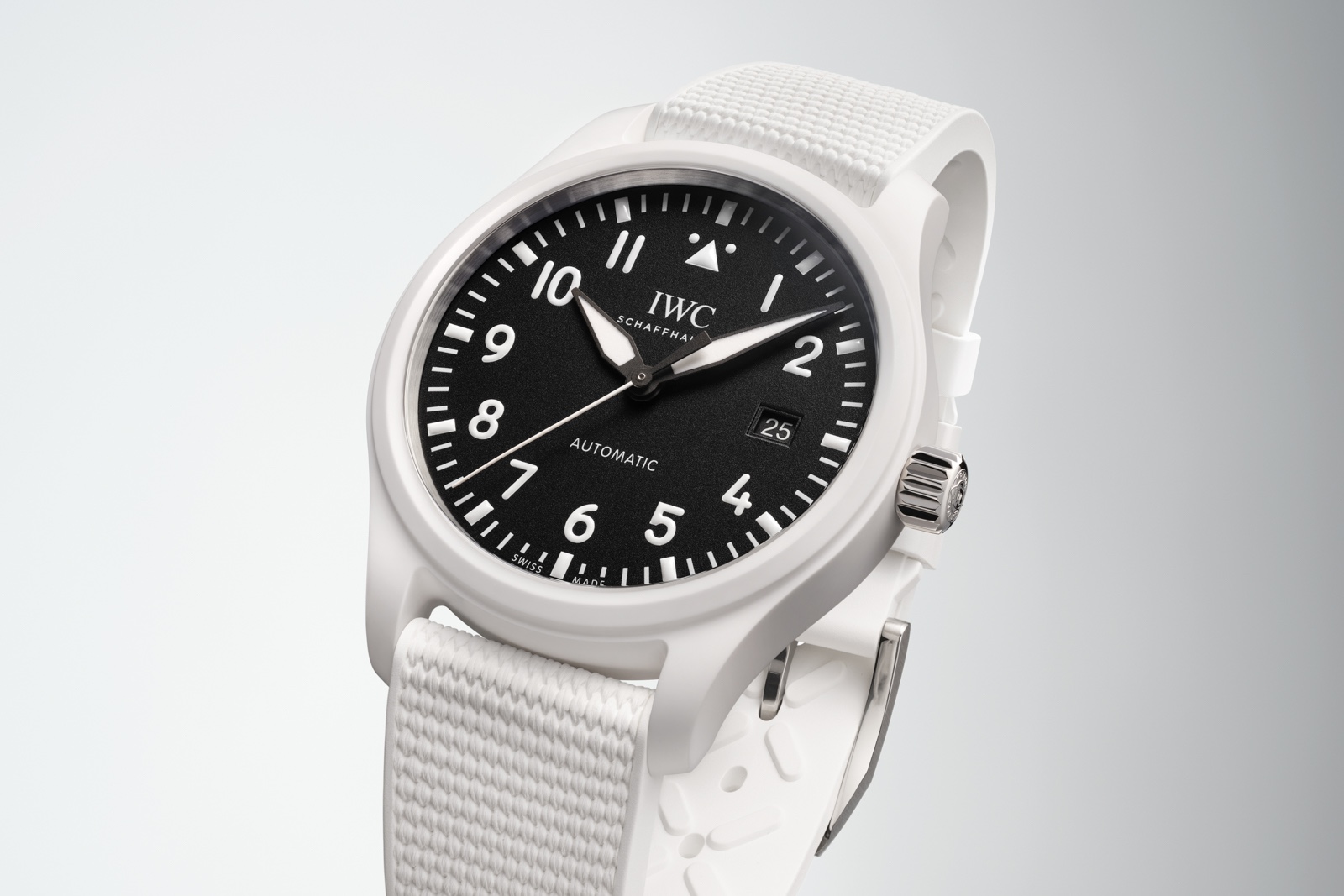
The Lake Tahoe is light, bright, and delivered on a rubber strap that is ready for anything you might get up to this summer (though the white textile shell might need some cleaning from time to time).
Priced at US$8,500, the Lake Tahoe is a fresh take on the brand’s famous pilot’s watch, managing to thread the needle between fashionable and timeless. If I could change one thing about this watch, it would be the unnecessary Top Gun branding that adorns the solid case back, but I could live with it considering the dial is unblemished.
Inside, the Lake Tahoe shares the same cal. 32112 automatic movement as the pricier Ingenieur, though it must be said the same movement is available for even less from sister brands within the Richemont stable. Still, the 120-hour power reserve is a great feature if your summer plans are anything like mine and involve doing as little as possible.
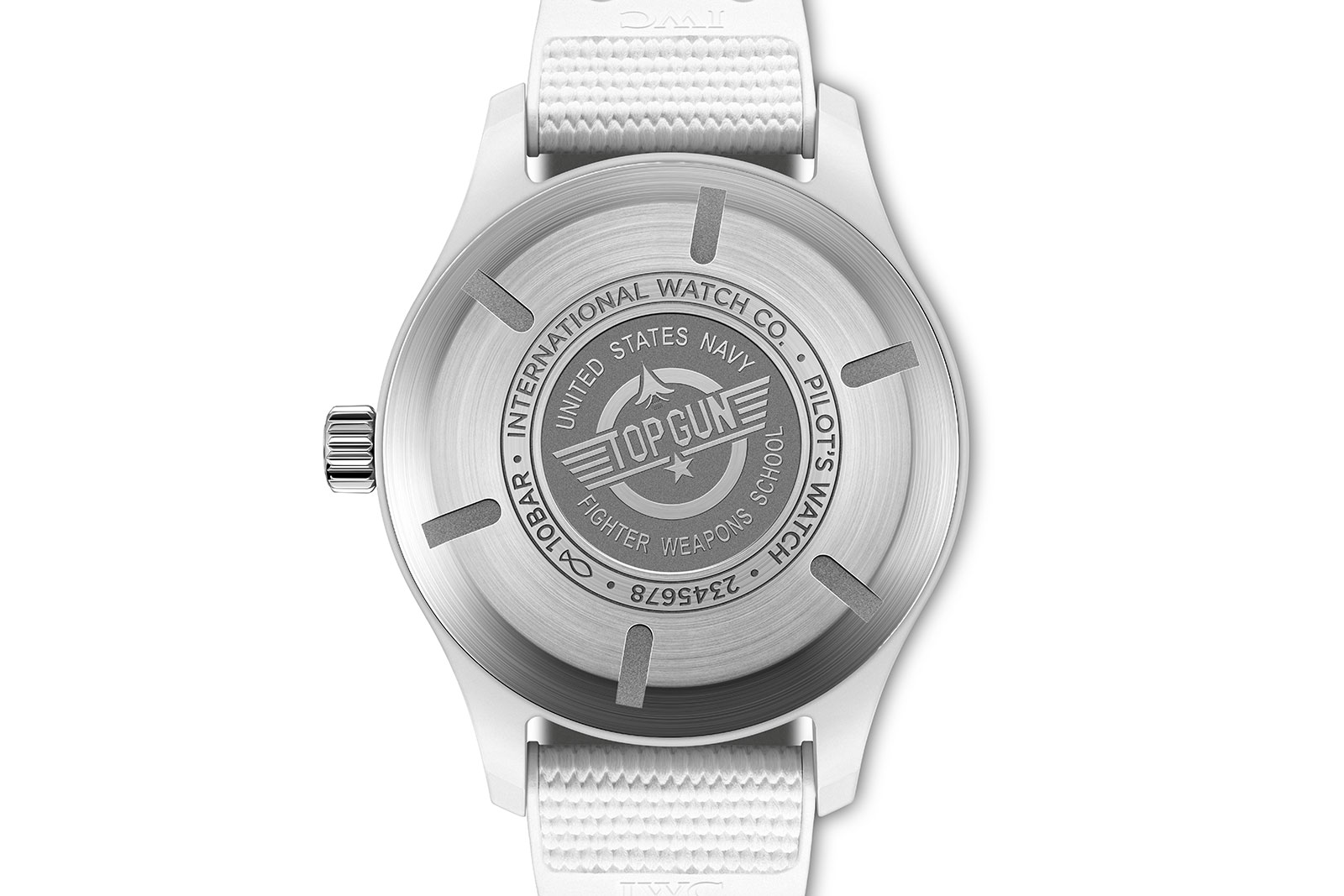
Under US$20,000
Rolex tends to dominate the conversation at Watches & Wonders, but this year they actually earned it by introducing the Land-Dweller, one of the most over-engineered sport watches ever developed. Truly the watch of the summer, Rolex chief executive Jean-Frédéric Dufour was recently spotted wearing one at Wimbledon. The Land-Dweller is notable for bringing back the Oysterquartz-style integrated bracelet design, but it excels most in ways that aren’t immediately obvious.
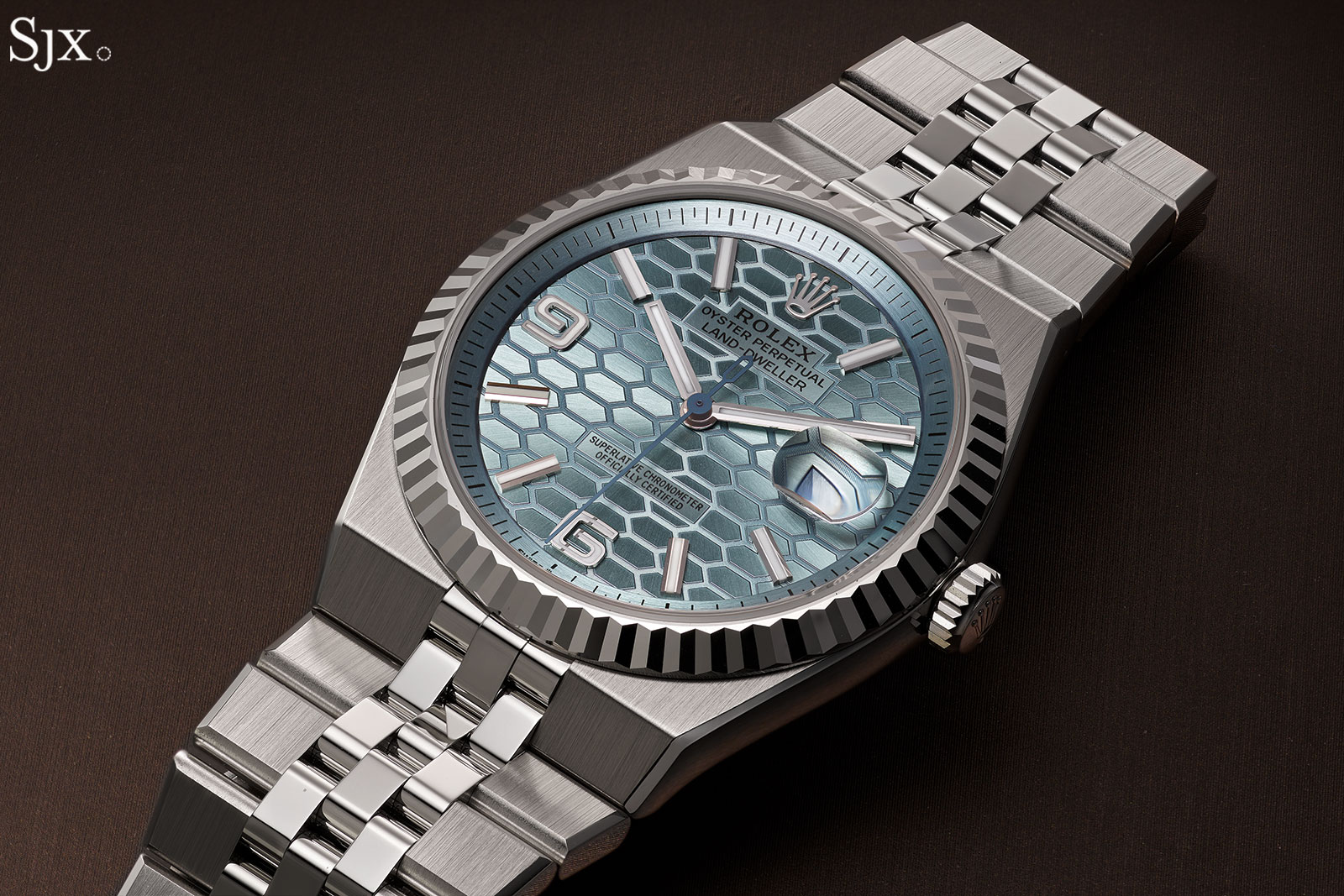
The Rolex Land-Dweller, shown here in platinum
The real story is the new silicon Dynapulse escapement that makes its debut in the cal. 7135. The first Rolex movement to tick at 5 Hz, the cal. 7135 benefits from 16 patents, making it quite unlike any other movement in the brand’s collection.
Rolex is a very conservative brand and has dabbled in silicon before on a limited scale, namely the Syloxi hairspring, but the brand is now clearly convinced that this technology is mature and ready for widespread use.
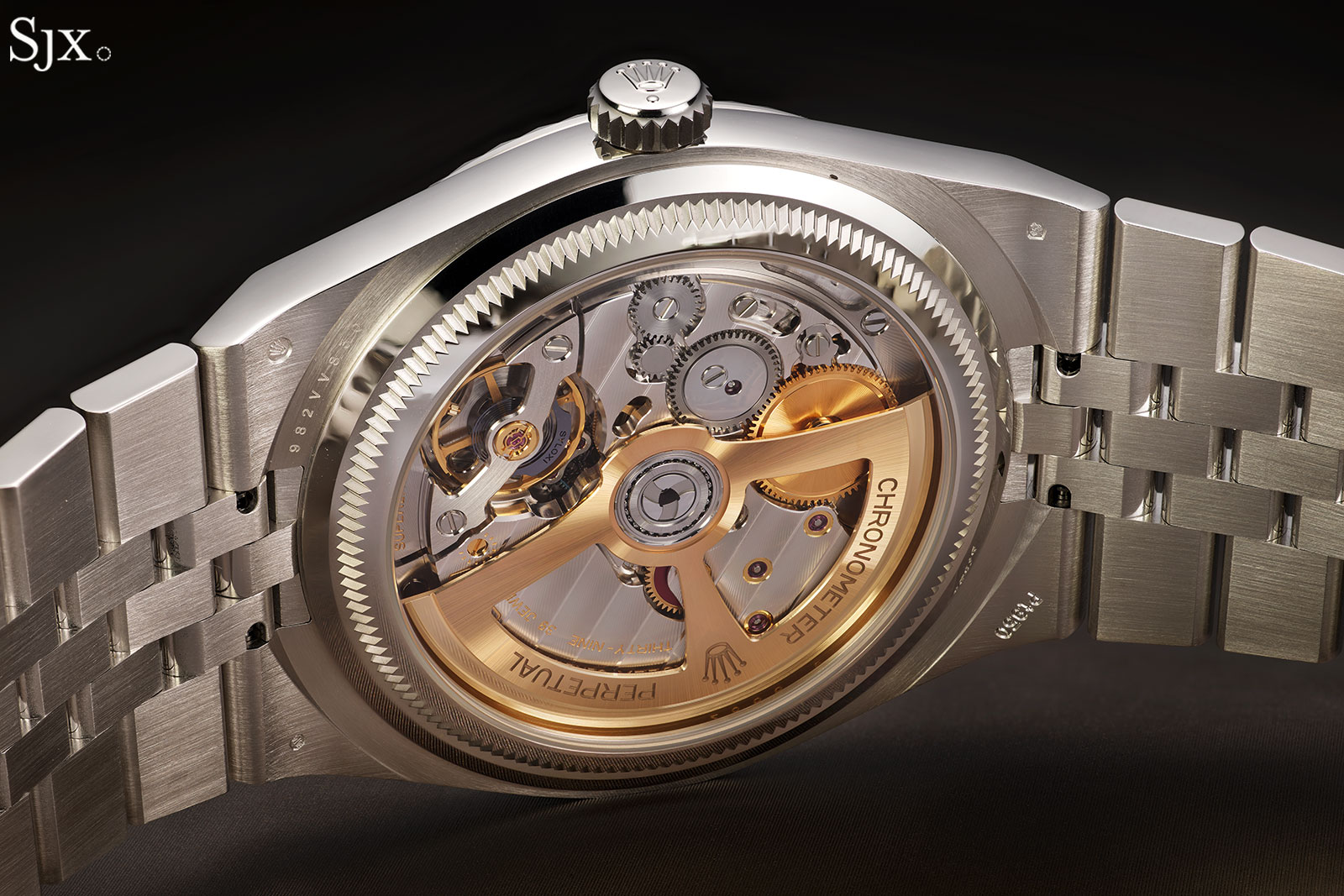
While the US$63,500 platinum model is shown, the white dialed variant in steel can be had for just US$14,900, which I’d say is a stellar value.
What’s more, the polarising design and somewhat awkward Land-Dweller model name narrowed the field of prospective customers, which might make it easier for technically-minded or contrarian collectors to pick one up without too much hassle.
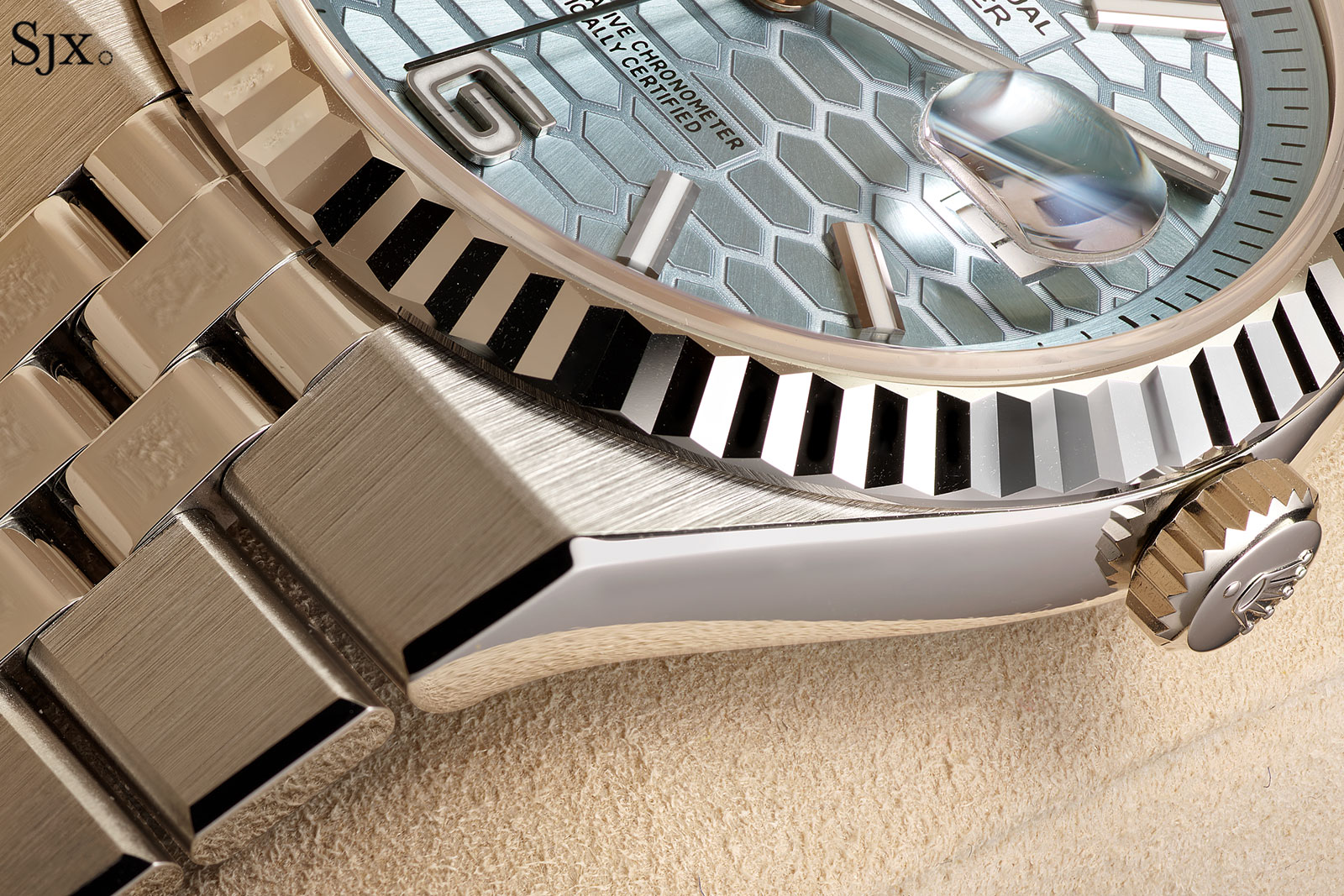
Summer is usually a time for kicking back and having fun, which might explain Grand Seiko’s new ‘Tokyo Lion” edition of the Tentagraph, ref. SLGC009G.
Featuring a massive titanium case with aggressive, angular details, the Tokyo Lion retains the high-beat modular cal. 9SC5 chronograph movement that made its debut in 2023. The styling of this watch is almost outrageous by the normally restrained standards of Grand Seiko, but in a world of lookalike integrated bracelet watches, the Tokyo Lion is a breath of fresh air.
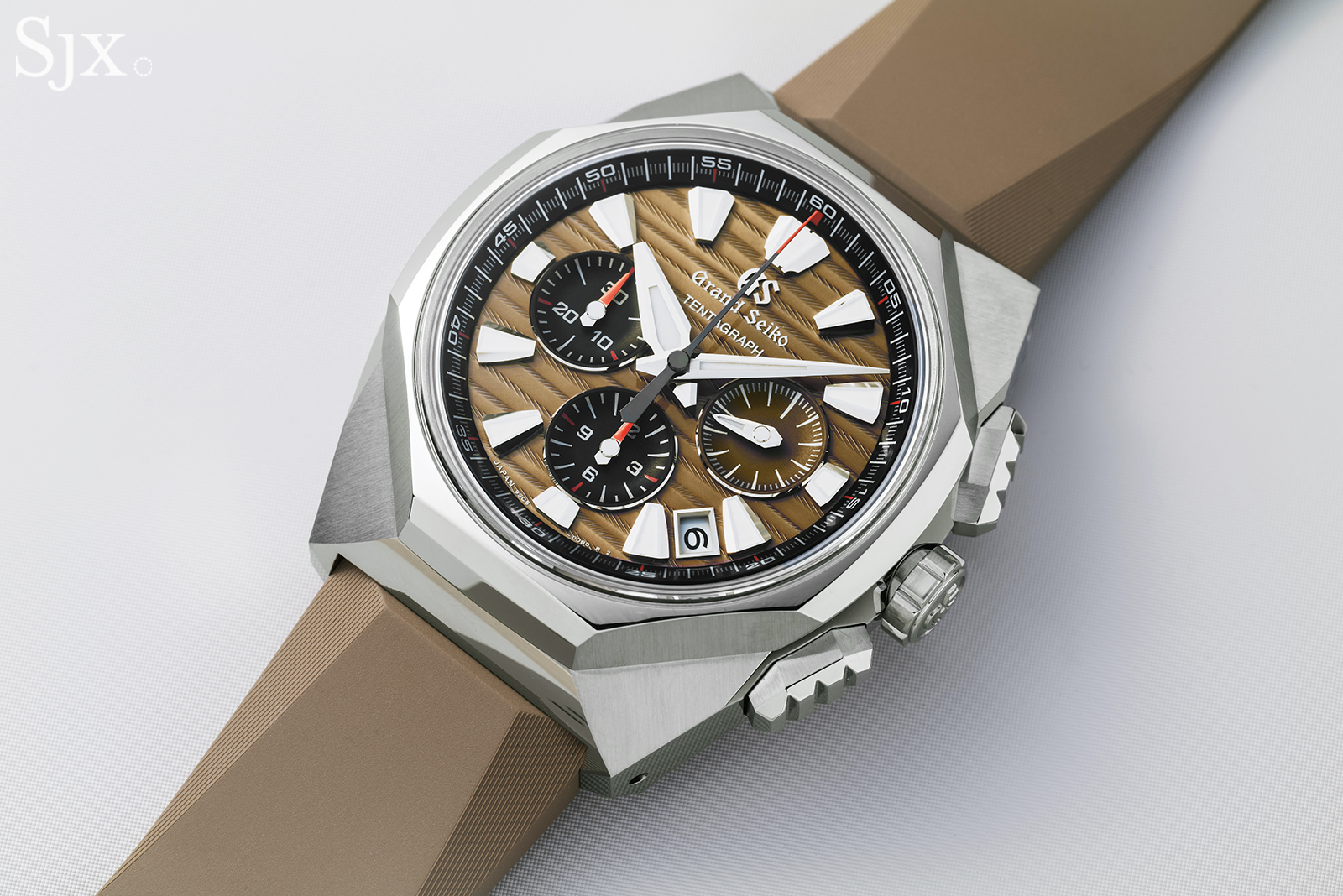
We have to start with those pushers, which are serrated to mimic a lion’s paws. Like the case, they feature angular forms with contrasting brushed and polished surfaces. Overall, the case measures 43 mm and a whopping 15.6 mm thick, but weighs a manageable 139 g thanks to its titanium construction.
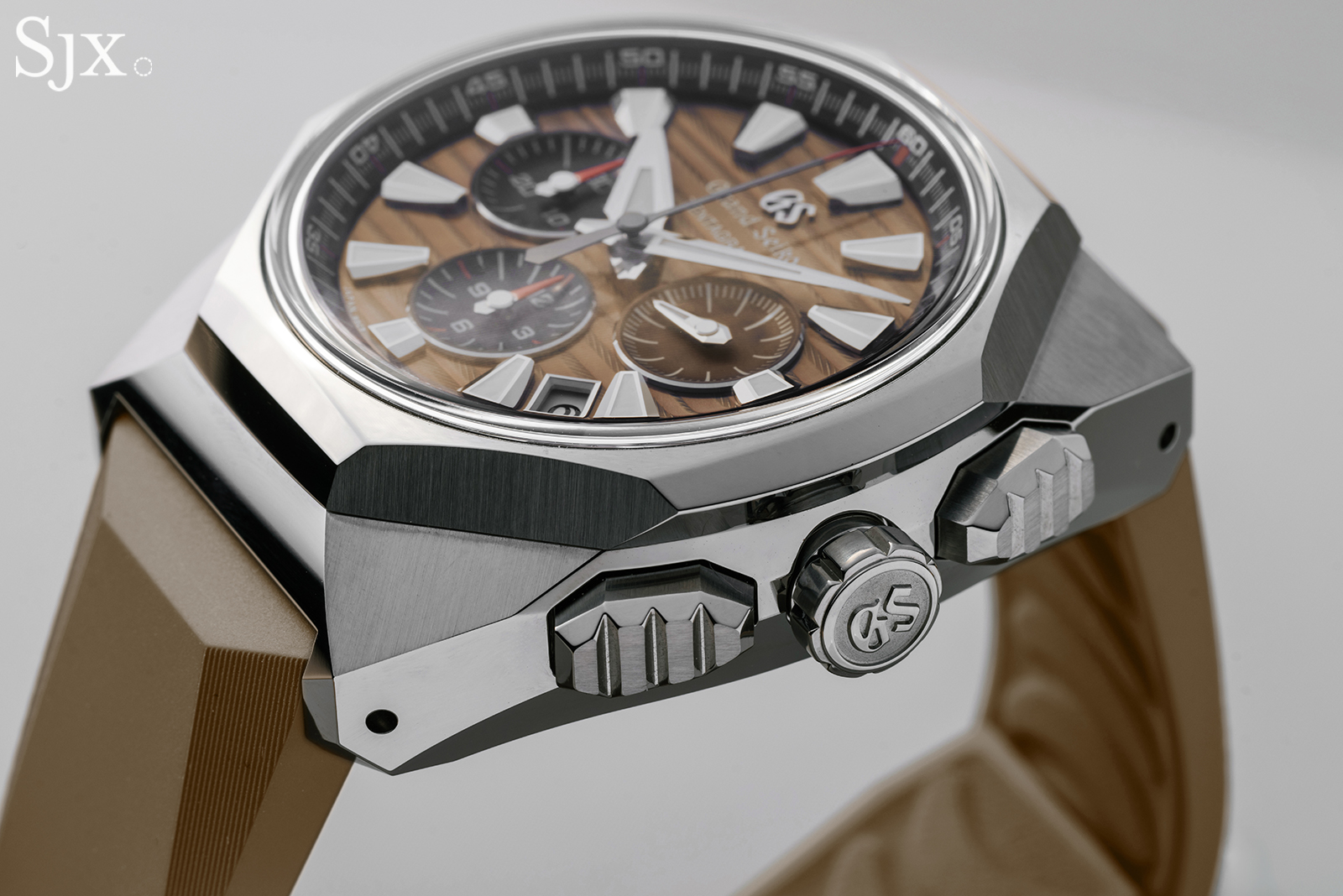
Wearing comfort is enhanced by the soft rubber strap, delivered in a similar shade of brown as the embossed dial. In keeping with the lion theme, the inside of the strap has been stamped with a paw print to aid air circulation. Ventilation channels are common with rubber straps but rarely do makers get so creative with the design.
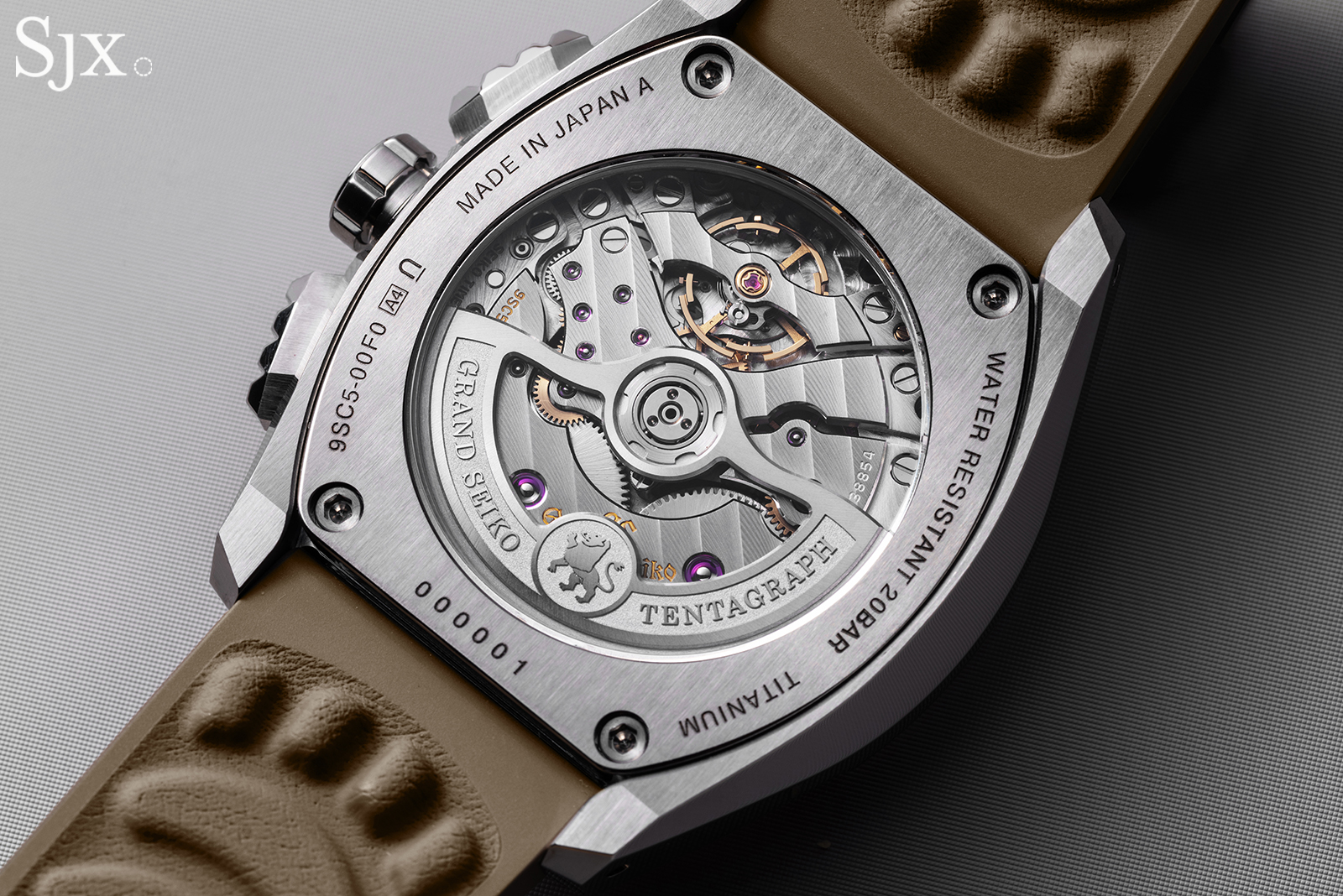
The Tokyo Lion is the very definition of ‘wrist presence’ but at US$16,900 it doesn’t offer the value proposition that many expect from Grand Seiko. That said, the Tentagraph movement is highly differentiated from its Swiss peers and contains the brand’s proprietary direct impulse escapement that extends the power reserve to 80 hours. It also features a free-sprung balance and an overcoil hairspring, something that’s all but extinct at this end of the market.
Under US$50,000
Hublot is brand that elicits strong emotions, and despite getting occasionally dragged on social media for being overpriced or derivative, the brand has earned many devotees thanks to its bold designs and use of innovative materials like recycled tennis racquets and multi-coloured ceramics.
The new Big Bang Unico Mint Green Ceramic demonstrates the brand’s ongoing leadership in the field of ceramics, which are difficult to produce in vibrant colours. In this case (pun intended) the ceramic cladding has been given a high-gloss finish that resembles high-end automotive paint, differentiating it from ceramic watches from the likes of Audemars Piguet, and the pastel mint green colour helps tone down the overt masculinity of the design.
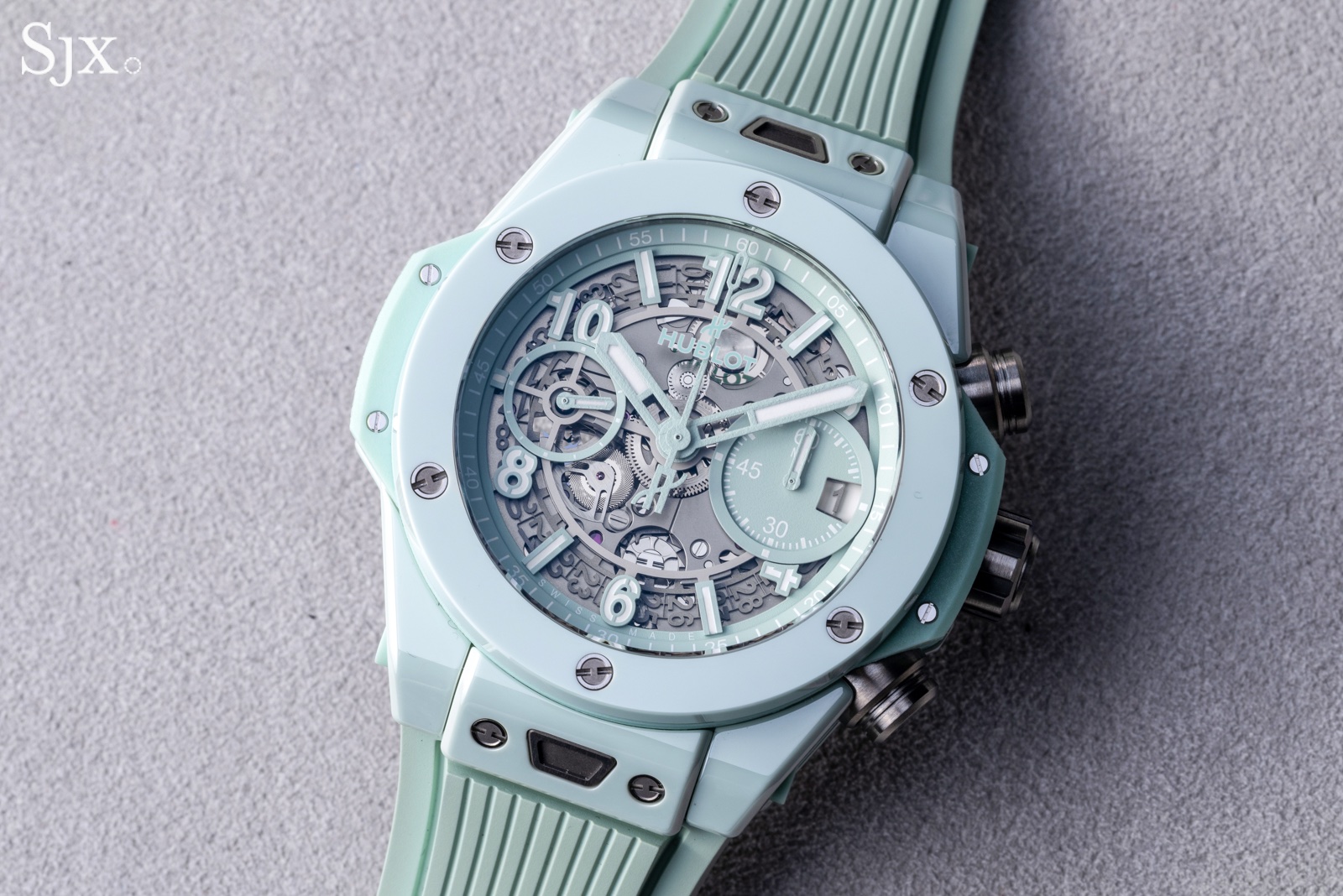
While Hublot has a reputation for making large watches, the 42 mm Big Bang case hugs the wrist and should be manageable for most, although the folding clasp is not an ideal fit on some wrists.
And those who take the plunge will be rewarded by some of the best chronograph pushers in the industry, which are immensely satisfying in both appearance and operation; even if the design isn’t your cup of tea it’s worth experiencing the smooth texture and crisp break when starting or stopping the chronograph.
Speaking of the HUB1280 Unico movement, most of the major component groups are visible through the open-worked dial, including the column-wheel and anti-backlash gearing for the horizontal clutch, which makes for an engaging visual treat.
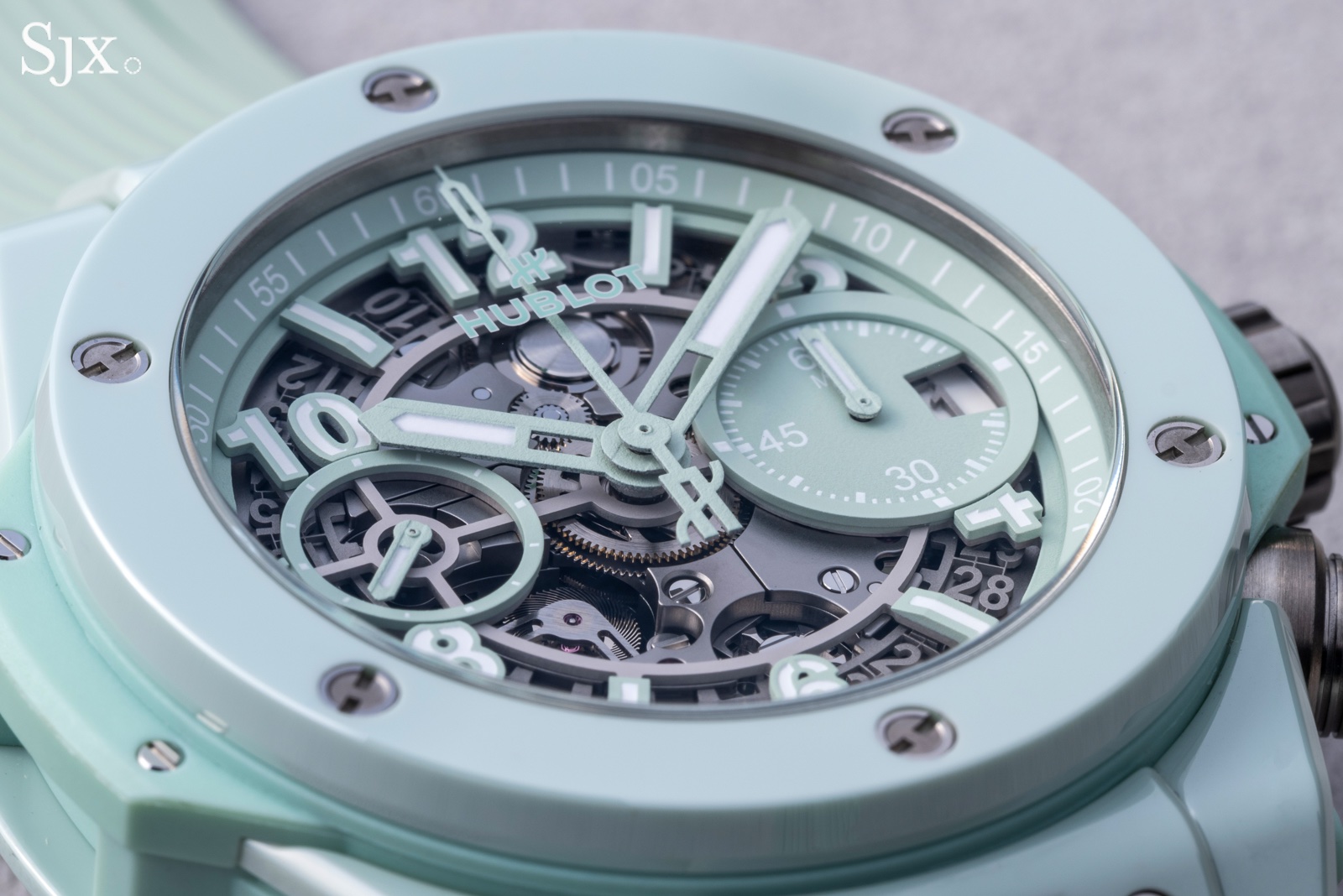
That said, there are a couple things I’d change given the retail price of US$24,100. First, I’ve always wished Hublot would use a free-sprung balance in the Unico platform, not least because the brand teased this feature in the original movement prototypes.
Second, the injection-moulded plastic mid-case is a little rough around the edges. These shortcomings aside, the vibrant colour, glossy texture, technical styling, and differentiated movement make the Big Bang Mint Green Ceramic pretty convincing on the wrist.
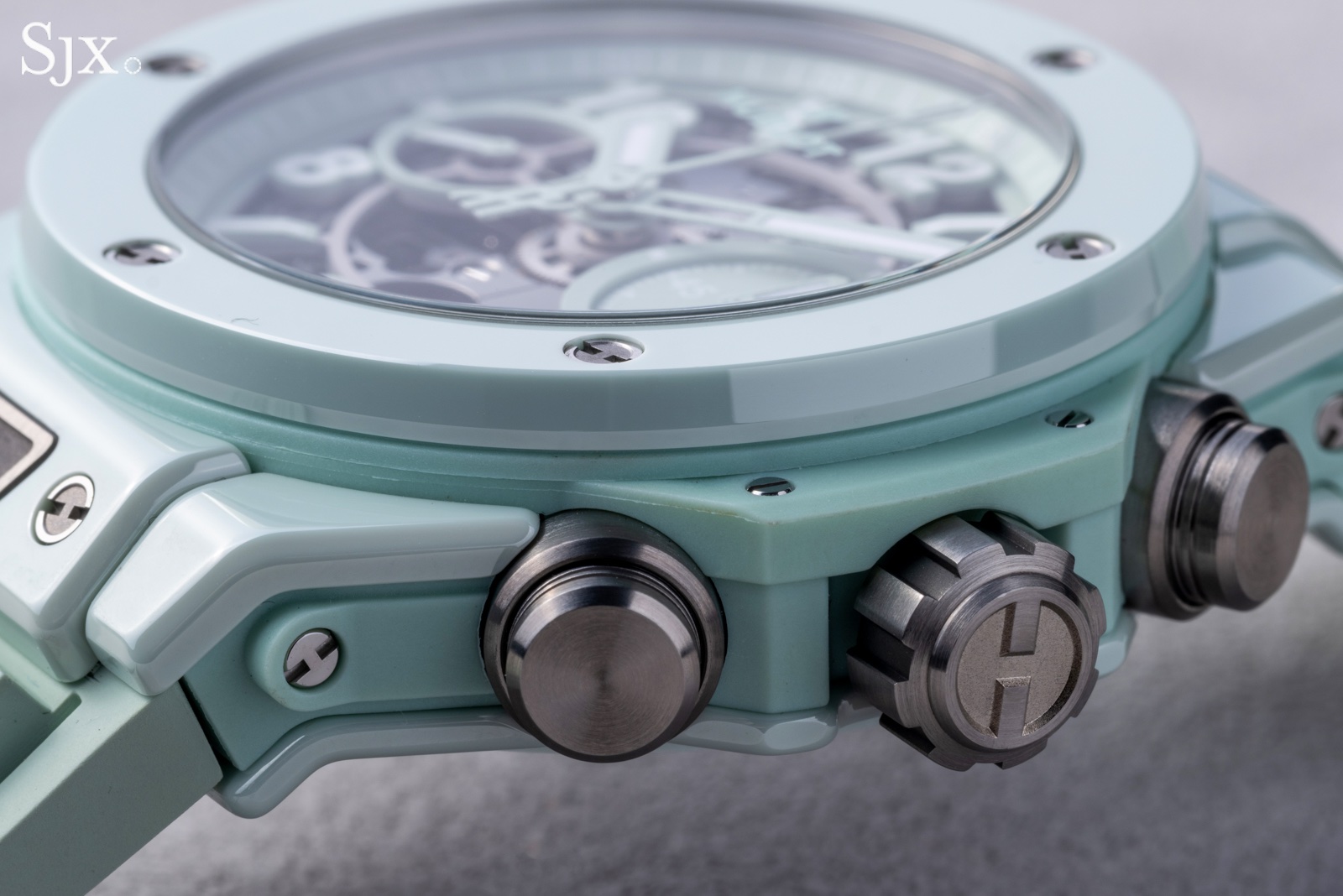
I vividly remember the first time I put on the Ulysse Nardin Diver Air, and of all the options on this list it would be my go-to holiday watch. Its appeal is rooted in its lightweight case, which weighs just 46 g without its 6-g velcro strap.
There are lighter watches, but none are true divers like the Air. Numbers aside, the watch feels almost weightless, perhaps due to the expectations created by its large visual size, and is effortlessly comfortable on the wrist.
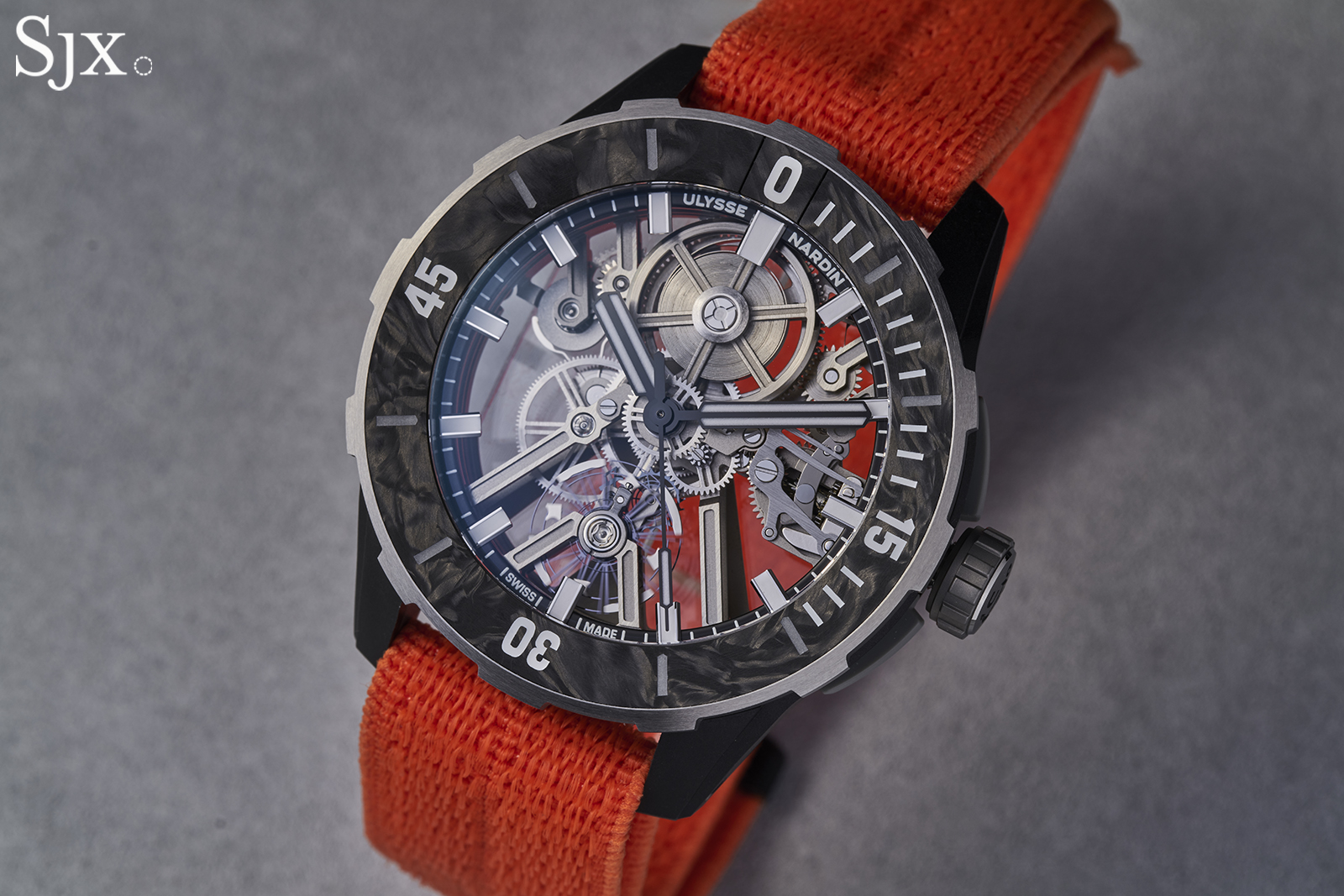
So how did they make a proper dive watch that’s 44 mm by 14.7 mm thick weigh as little as a dozen sheets of A4 paper?
It starts with a titanium case and bezel, which is clad with Nylo, an upcycled polymer-carbon composite material. The ruthless search for weight-savings continues inside to the UN-374 automatic movement that itself weighs just 7 g thanks to its efficiently engineered open-worked design and titanium bridges.
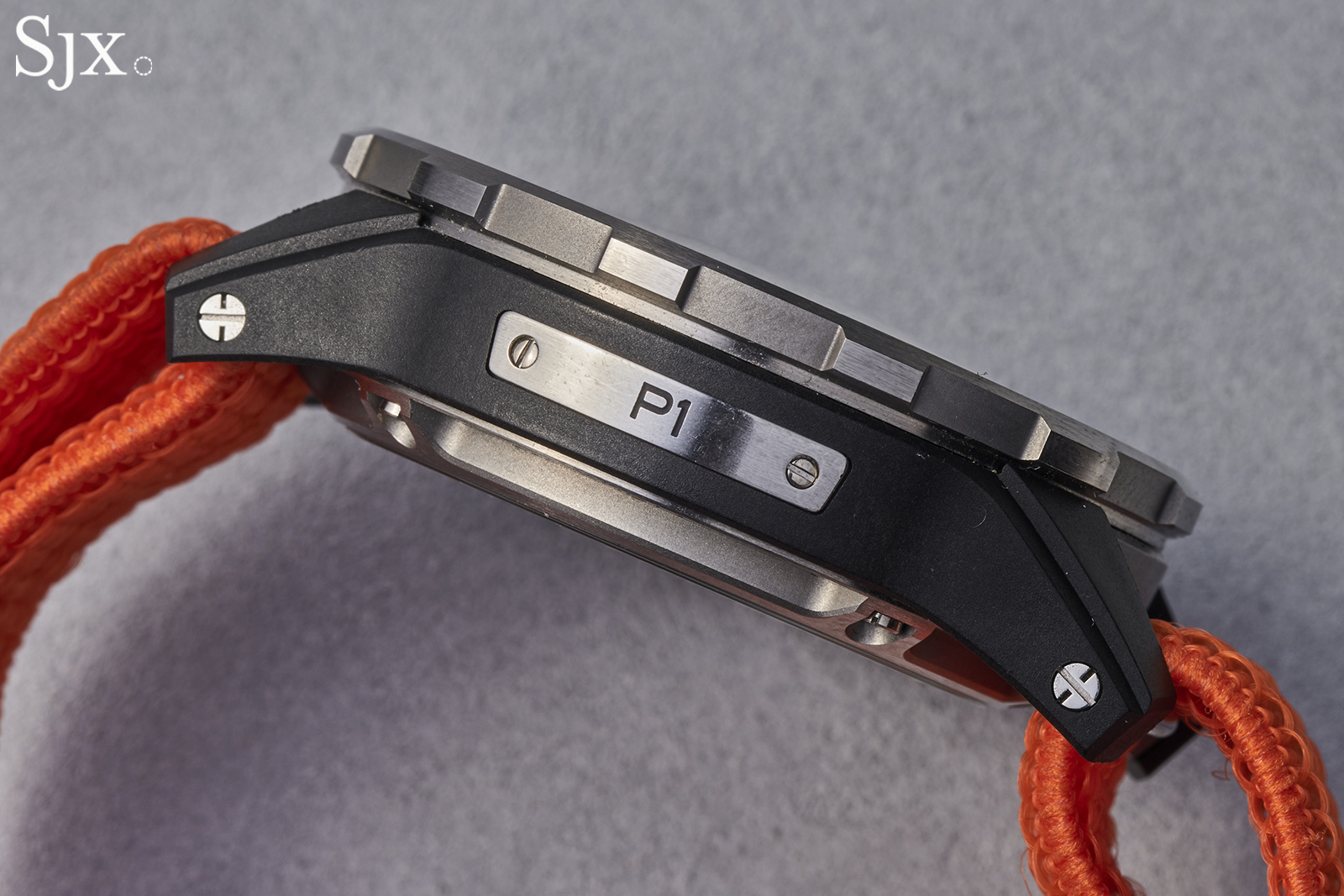
The Air features many appealing details, from the exposed magic lever bi-directional winding system, to the bold notches on the bezel that feel great to the touch. There’s also a fun Easter egg on the case back: instead of the usual “Swiss” designation that’s commonplace, Ulysse Nardin went a step further and engraved the coordinates for their headquarters in Le Locle.
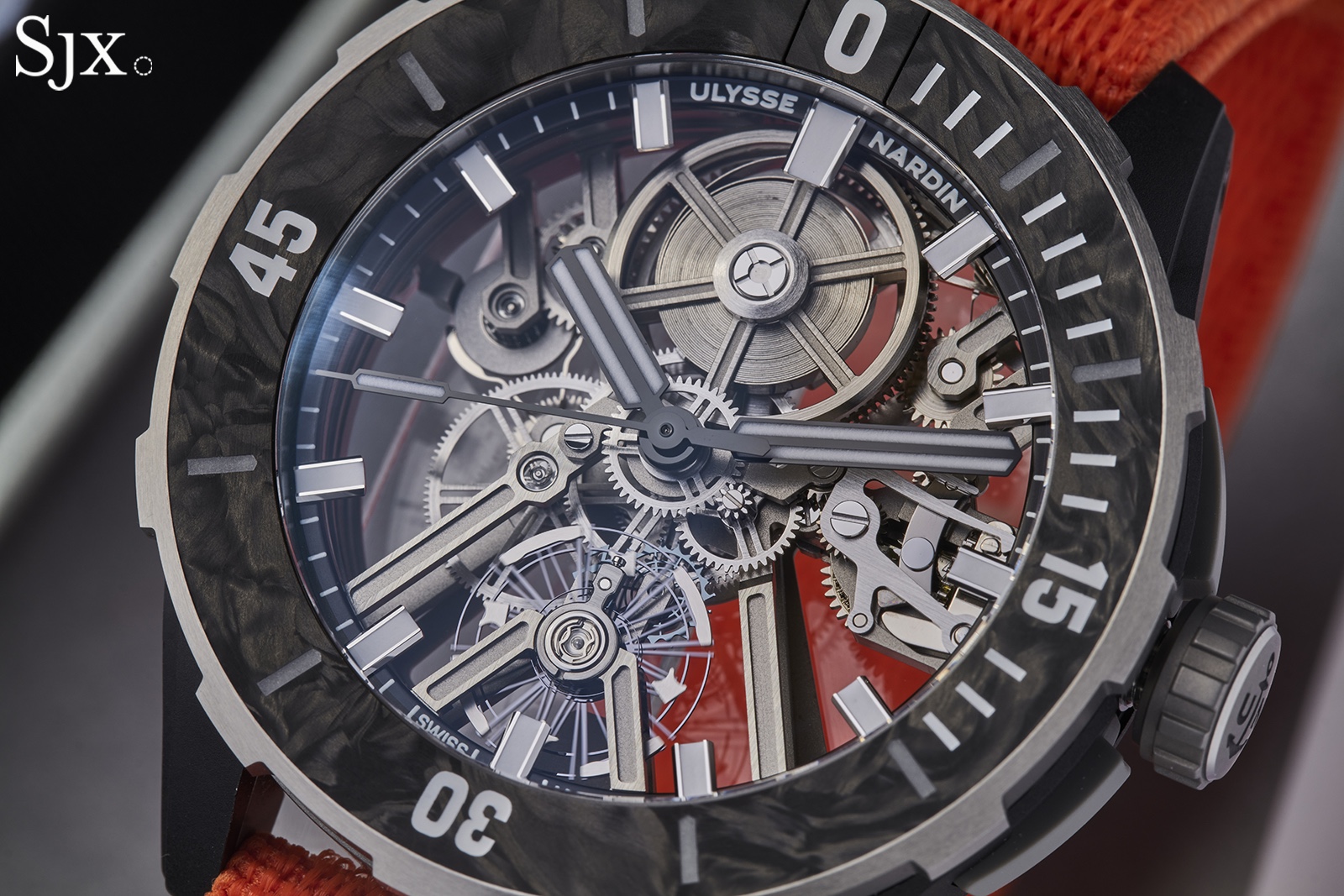
Of course, being a Ulysse Nardin, the Air capitalises on the brand’s expertise in silicon technology; the balance wheel, hairspring, escape wheel, and pallet lever are crafted from silicon, which helps improve isochronism and reduces the need for lubrication. But while the watch weighs just 52 g all told, it’s not for lightweight budgets, priced at US$38,000. This pricing might be a challenge, since visually the watch has a lot in common with the brand’s own Diver X collection, which is priced lower but lacks the extraordinary wrist feel of the Air.
US$50,000 to $150,000
Someday we will be able to talk about the Cubitus without having to mention the outcry that accompanied the collection’s launch late last year, but we’re not there yet. In short, Patek Philippe’s new square-shaped collection of elegant sport watches proved to be a hit with the brand’s A-list clientele but the 45 mm sizing left some Nautilus fans scratching their heads.
Enter the Cubitus ref. 7128/1G, which debuted at Watches & Wonders in a new 40 mm size that should convert many skeptics. The new Cubitus feels reassuringly dense thanks to its slim white gold case and bracelet, which drapes over the wrist in a way that will feel familiar to those who’ve worn a Nautilus in precious metal.
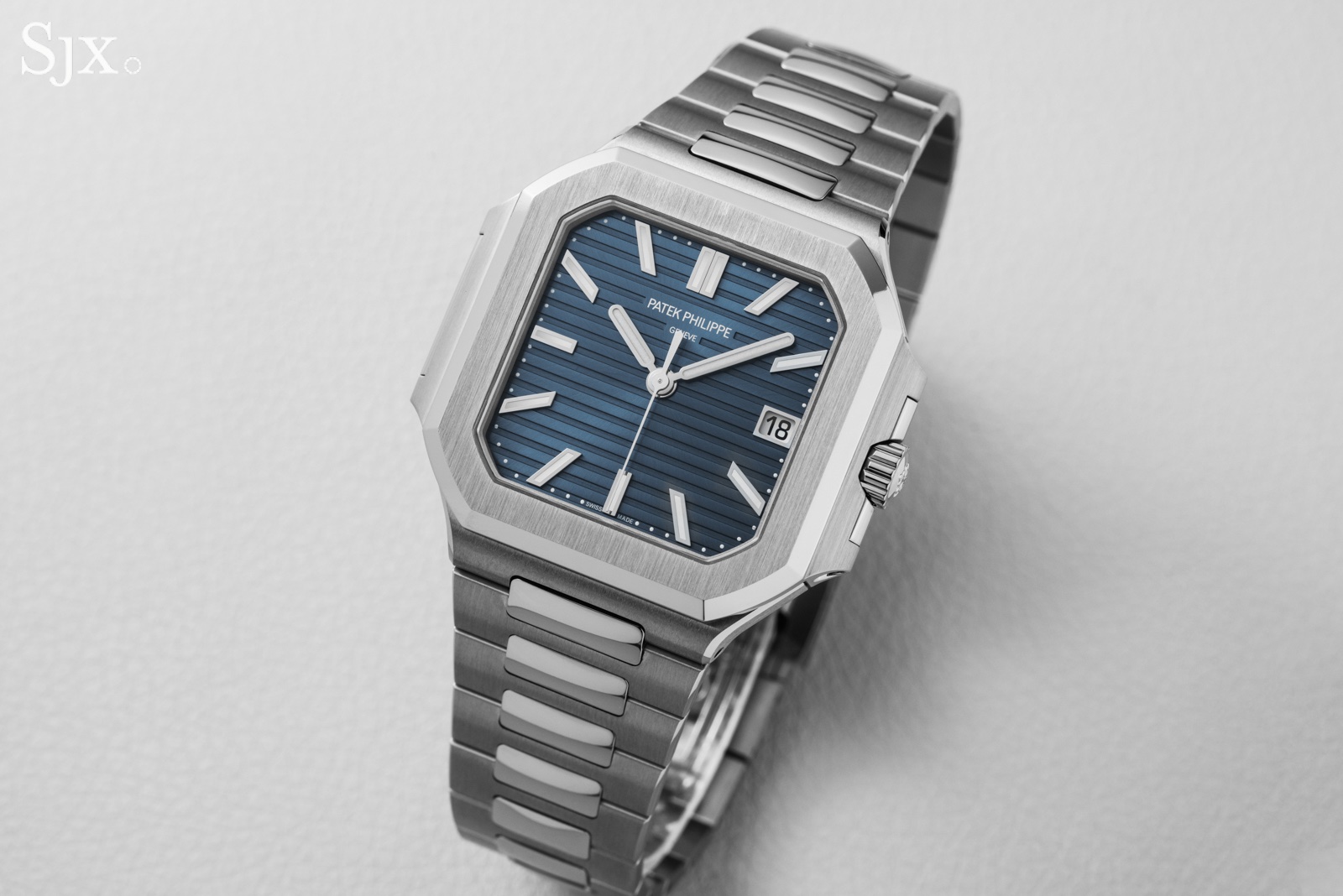
The Nautilus theme continues on the dial, which features the familiar embossed sunburst finish and lozenge-shaped hand set of its predecessor. But the octagonal bezel, which is basically a square with faceted corners, gives the Cubitus its own identity. The resemblance is probably incidental, but the shape reminds me of Place Vendôme, the location of the Patek Philippe boutique in Paris.
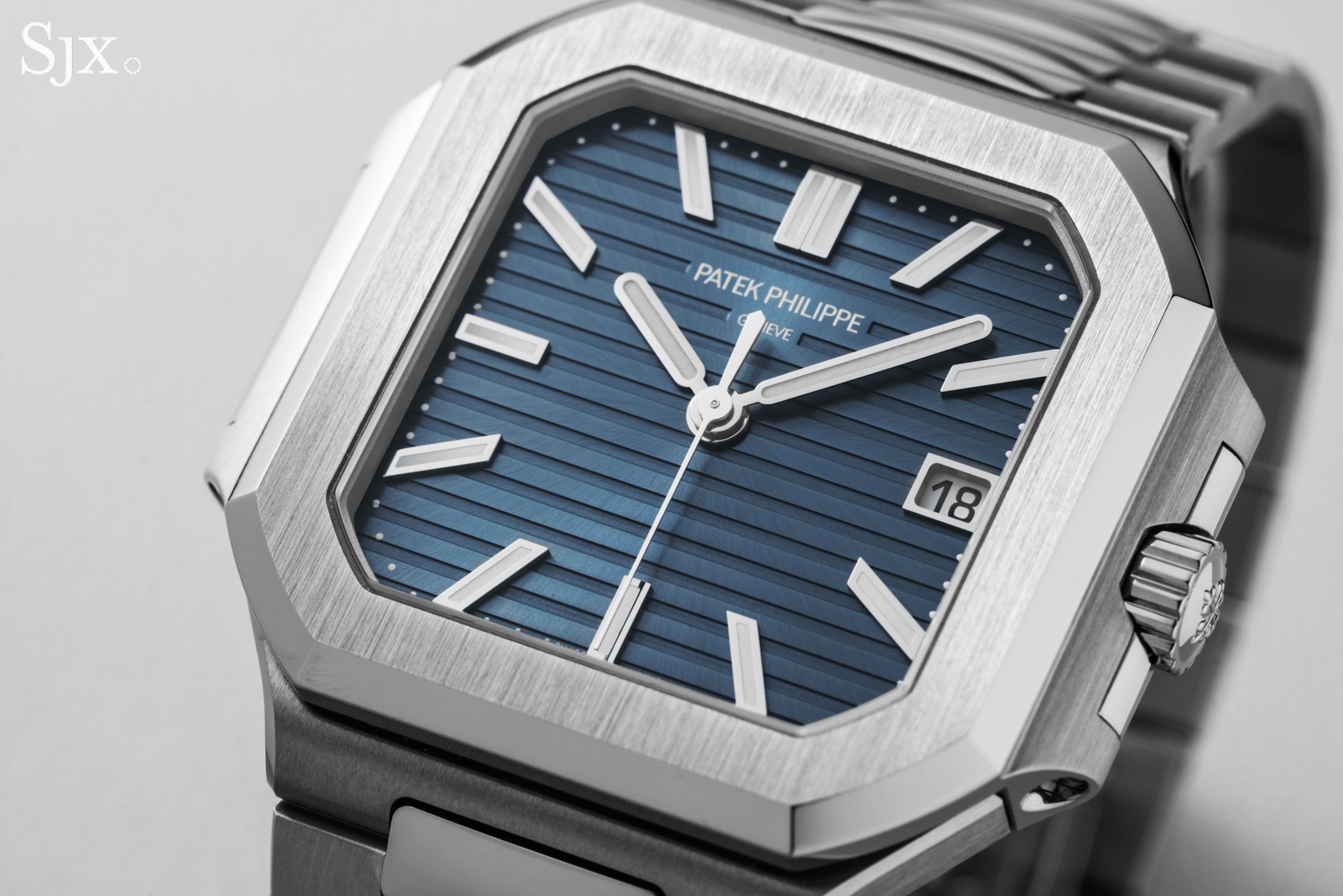
Naturally, the finishing is excellent inside and out. While it’s true that the cal. 26-330 S C is one of Patek Philippe’s more industrial movements and you shouldn’t waste time looking for inward angles, it is genuinely radiant and the major details are finished appropriately. Furthermore, the brand’s industrial prowess pays dividends when it comes to timekeeping, with a best-in-class rating of -1 to +2 seconds per day thanks mainly to its silicon hairspring.
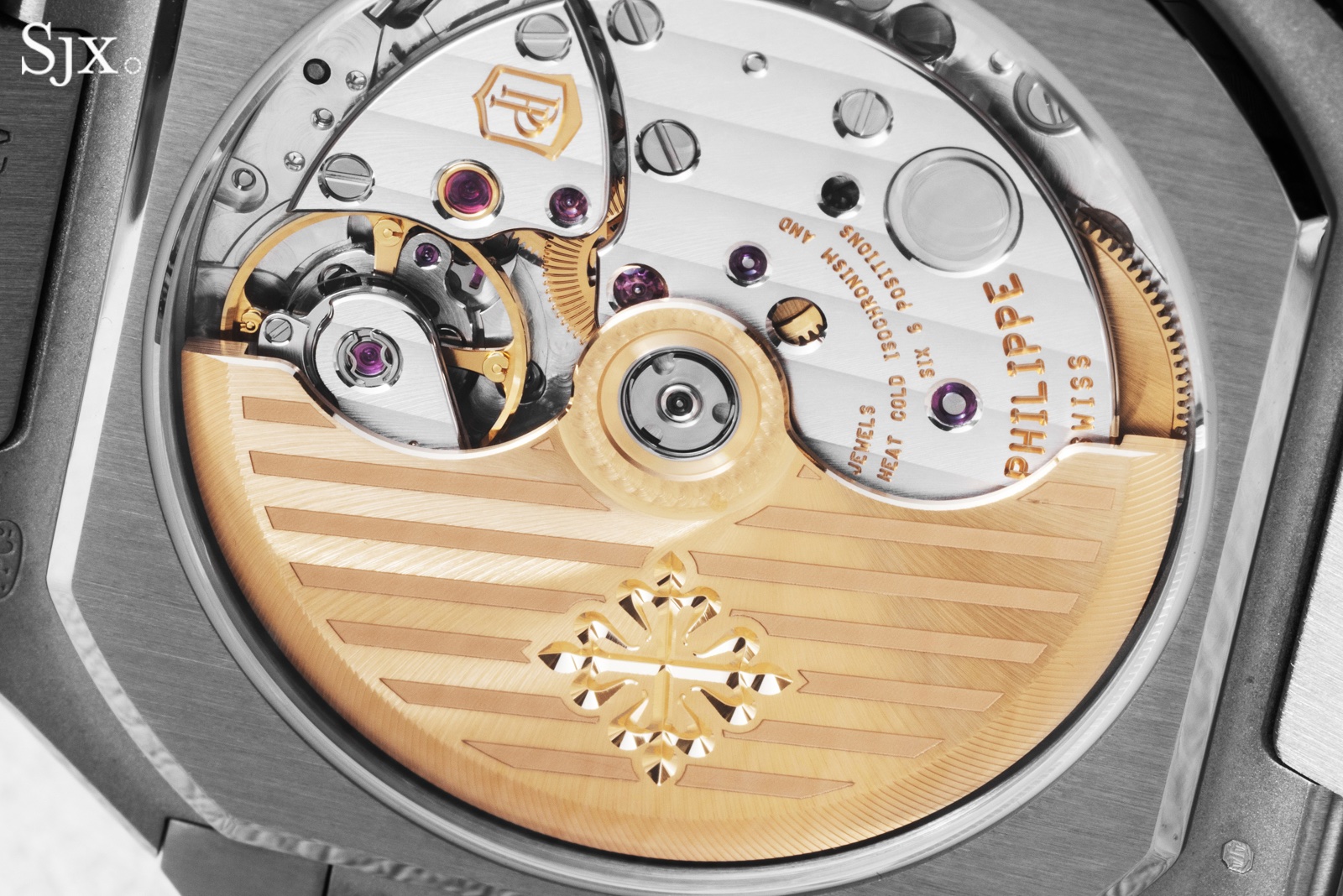
We’ve yet to find the limits of Patek Philippe’s pricing power, and the retail price of about US$80,000 is probably justified given the supply and demand dynamics at this end of the market. Value retention aside, the smaller sizing and luxurious weight give the Cubitus a truly decadent feel on the wrist.
If the faceted form of the Cubitus doesn’t do it for you, the new Honeygold Odysseus from A. Lange & Söhne might.
For those who are new to Lange lore, Honeygold is a proprietary gold alloy that the brand reserves for special editions. As a result, Honeygold watches tend to be sought-after by collectors looking for something unique. Beyond this inherent exclusivity, the composition of Honeygold makes it harder and more scratch-resistant than other gold alloys, making it ideally suited for luxury sport watch like the Odysseus.
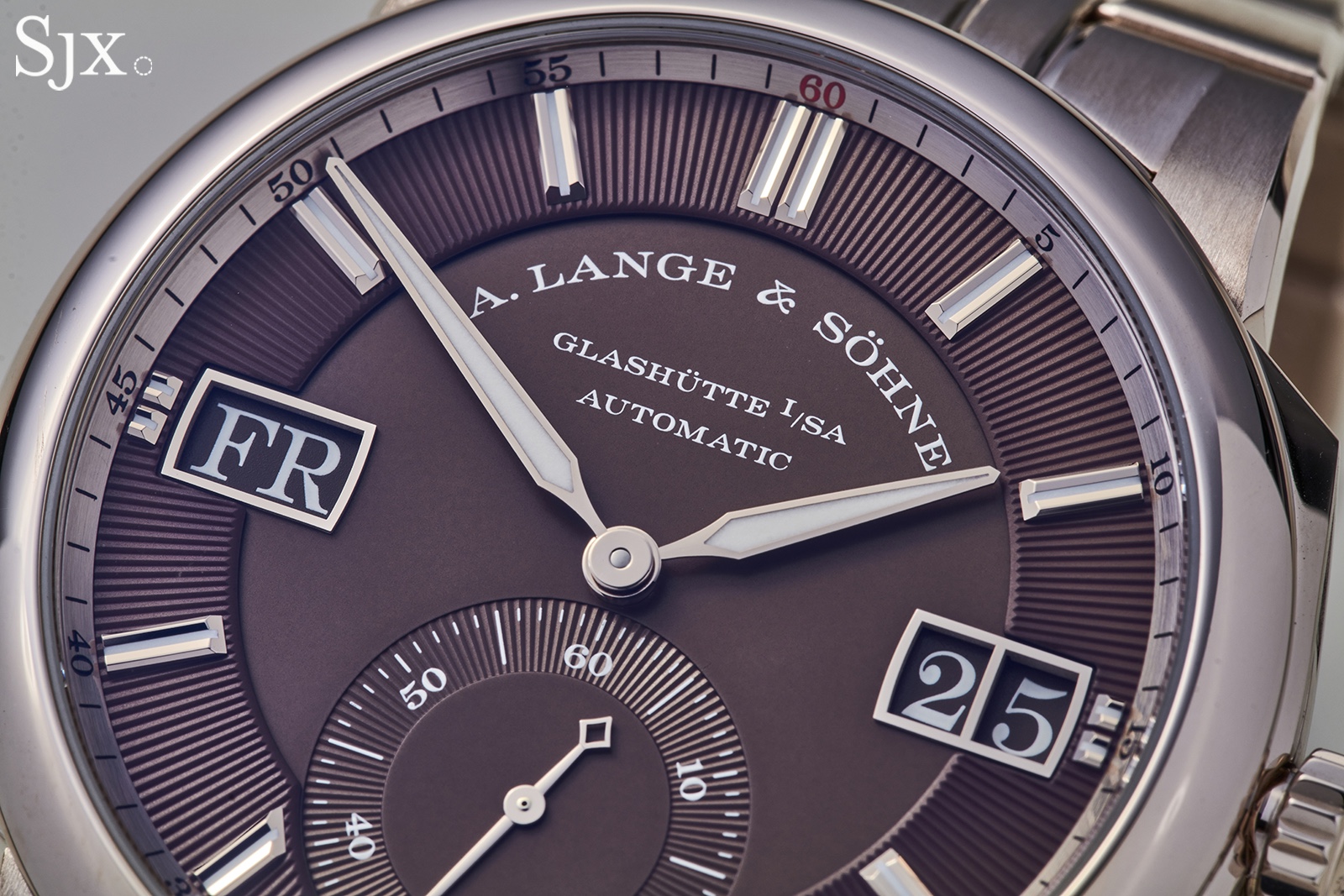
Otherwise, the Honeygold edition is similar to the standard time-only Odysseus models, featuring the same embossed dial pattern found on the white gold version that debuted in 2020. In other words, it’s exceptionally well made but slightly awkward in appearance.
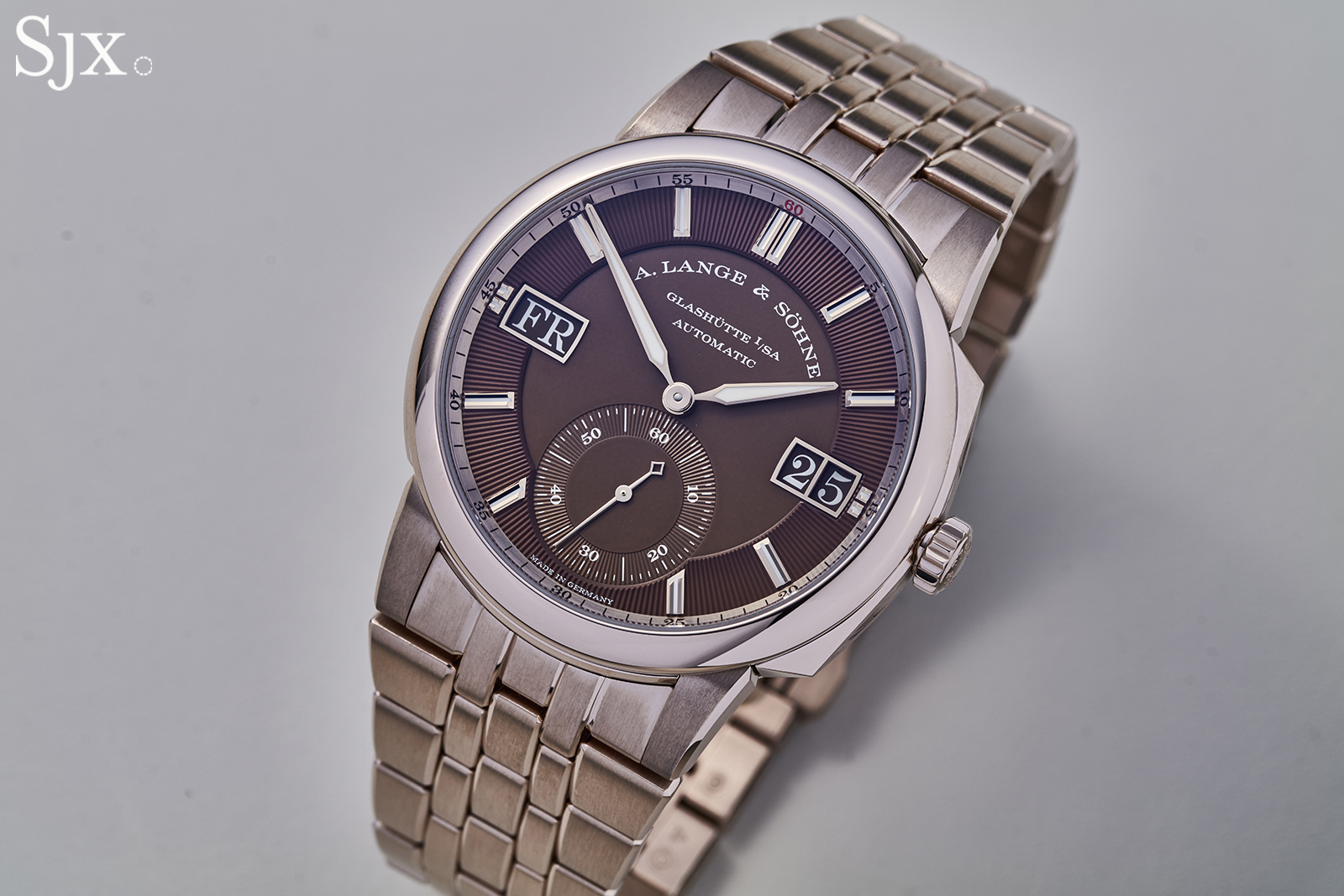
Like any Lange, the company puts most of its own efforts into the movement, and lets suppliers deal with the rest, hence the maker’s mark for Sächsische Uhrentechnologie GmbH (SUG) engraved on the case back. This means that the L155.1 Datomatic movement gets the brand’s full attention, and it shows.
The movement was adapted from the L086.1 but upgraded with a 4 Hz beat rate and full balance bridge to match the sporty aspirations of the Odysseus collection.
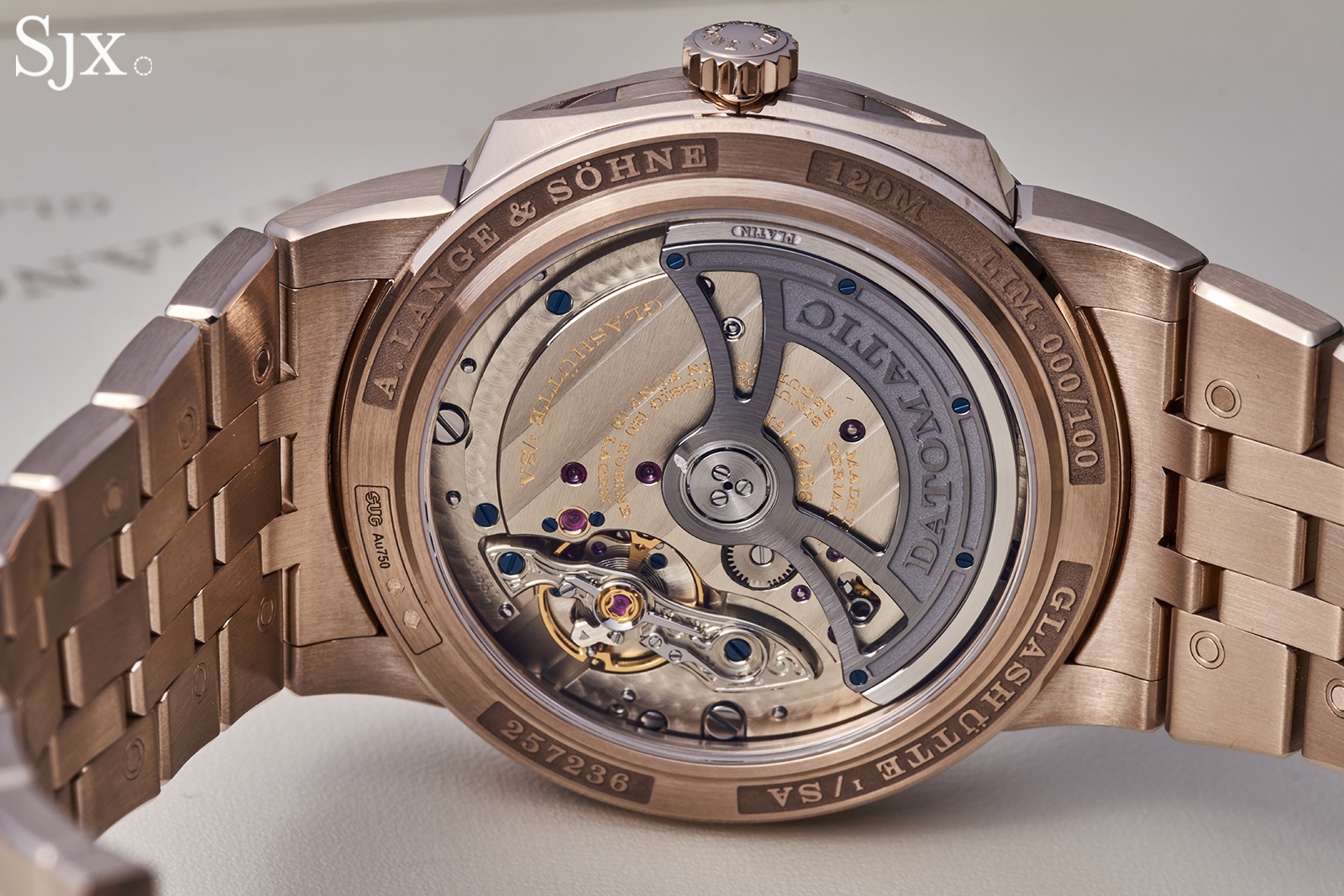
Lange has been aggressive with pricing of late, especially when it comes to the brand’s special edition models like this. In fact, at about US$110,000, the Honeygold Odysseus is one of the first Lange models I’ve seen priced higher than the equivalent Patek Philippe. Sure, it’s finished to a higher standard than its Geneva-built rival and will be made in much smaller numbers, just 100 pieces in fact, but it’s an eye-opening price nonetheless.
For those looking for something a little different with a mild complication, this year saw the launch of the Louis Vuitton Tambour Taiko Spin Time, which features the brand’s own take on the jump hour complication and comes in a white gold case with intriguing construction. Compared to previous Tambour models that tended to be colourful and exuberant, the Spin Time, for better or worse, is tastefully restrained in its design and colour palette
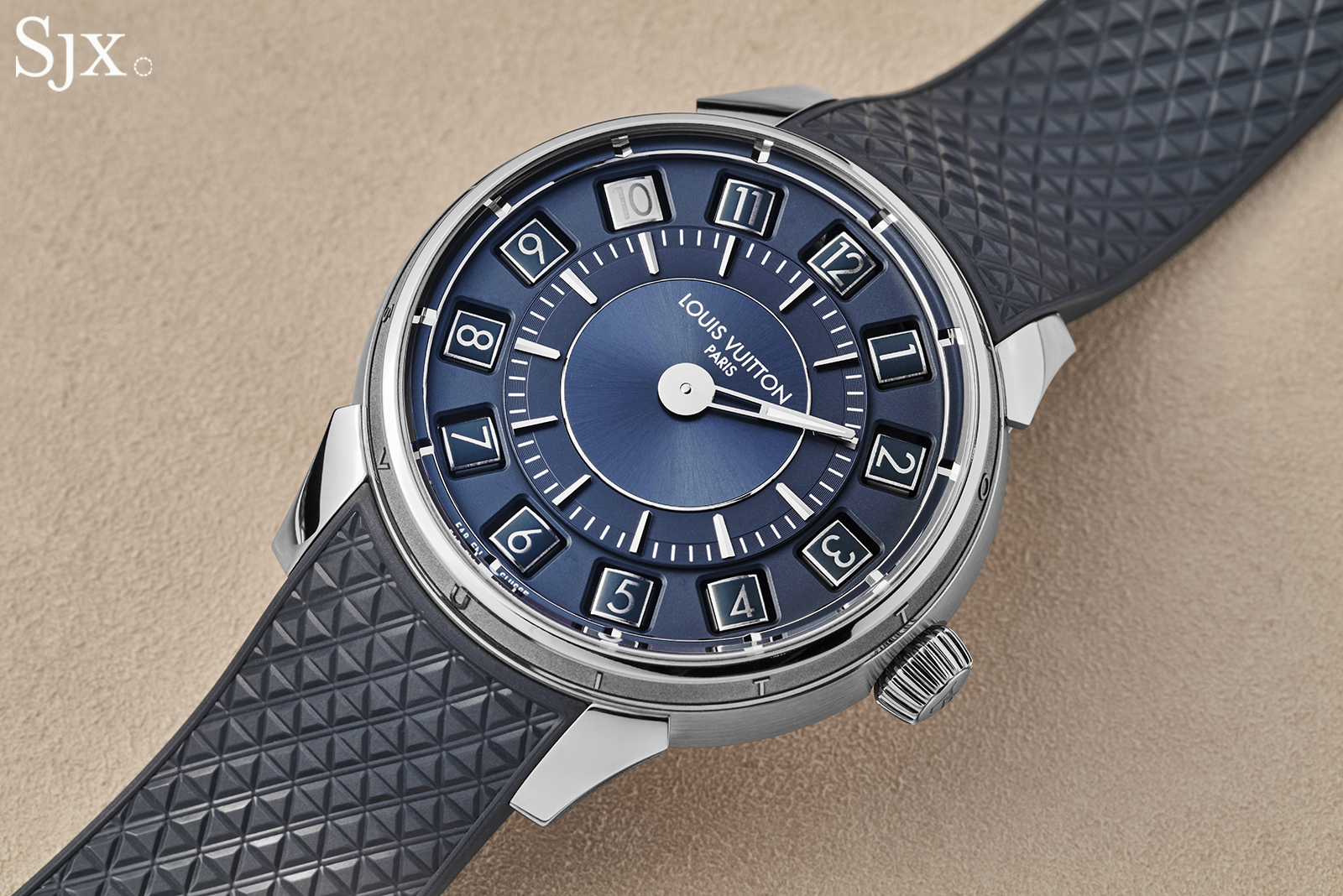
The Spin Time is available in a few different configurations, but all benefit from the latest automatic movement platform from the group’s top movement supplier, La Fabrique du Temps, hence the ‘LFT’ prefix on the cal. ST13.01. It’s a well-finished movement with a free-sprung balance and a solid gold winding mass, compactly organised into the center of the case to drive the peripheral spinning cubes that indicate each hour.
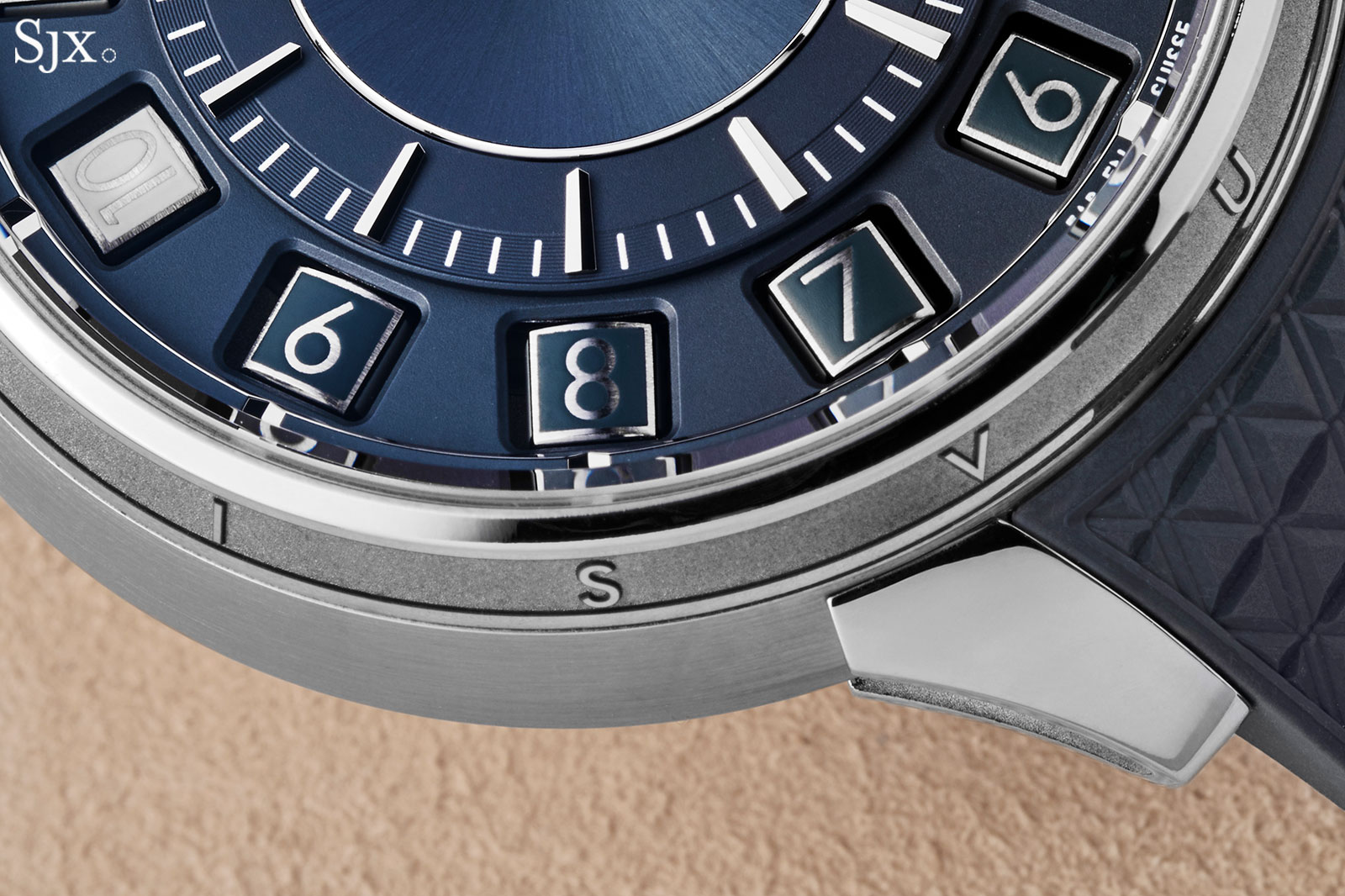
But for me, the Spin Time really shines thanks to its elaborate white gold case, which is a more streamlined version of the chunky Tambour case used in the past. This means that it feels somewhat familiar, with the brand name written around the bezel, but this and all other details have been slimmed down and refined.
The case is vaguely conical in form, with the widest point sitting close to the wrist. The lugs are fitted separately in order to offer a contrasting finish with the brushed mid-case, and it’s worth appreciating the fine joinery where the lugs attach – it’s a complex fit done expertly well.
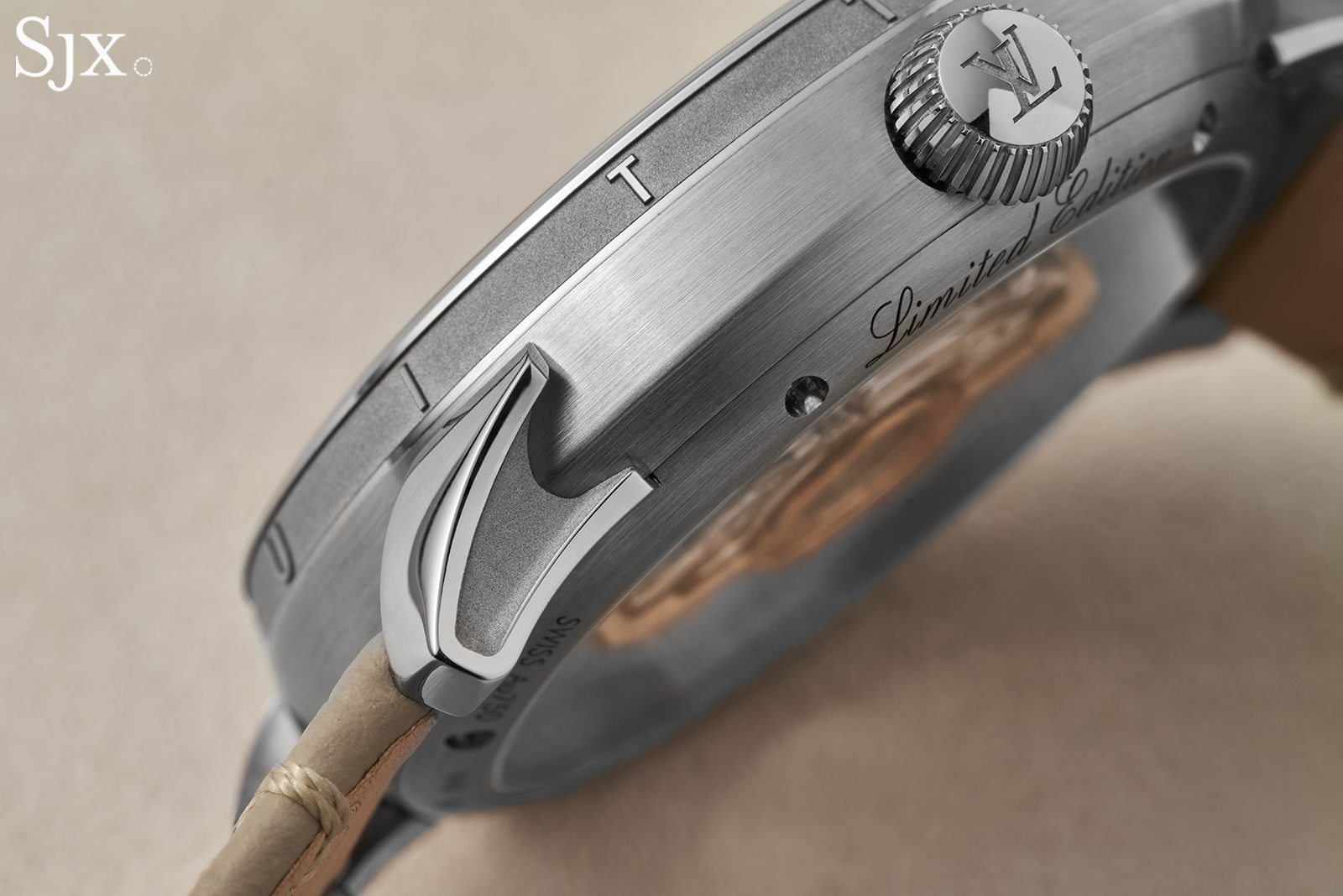
Some might balk at the retail price of US$76,000, but objectively speaking the Spin Time offers as much or more than many watches at this price point from establishment brands. This speaks to the fact that while Louis Vuitton is the 800-pound Gorilla of mainstream luxury, many watch collectors view it as more of a startup when it comes to high-end watchmaking.
Unlimited budget
Watches like the Audemars Piguet Royal Oak Concept Tourbillon “Companion” illustrate the divide between the “haves and the have-yachts” to borrow the title of Evan Osnos’ recent book. Targeted at the intersection of haute horlogerie and contemporary art, the Companion is a collaboration with Brian Donnelly, an American artist who makes work under the name KAWS.
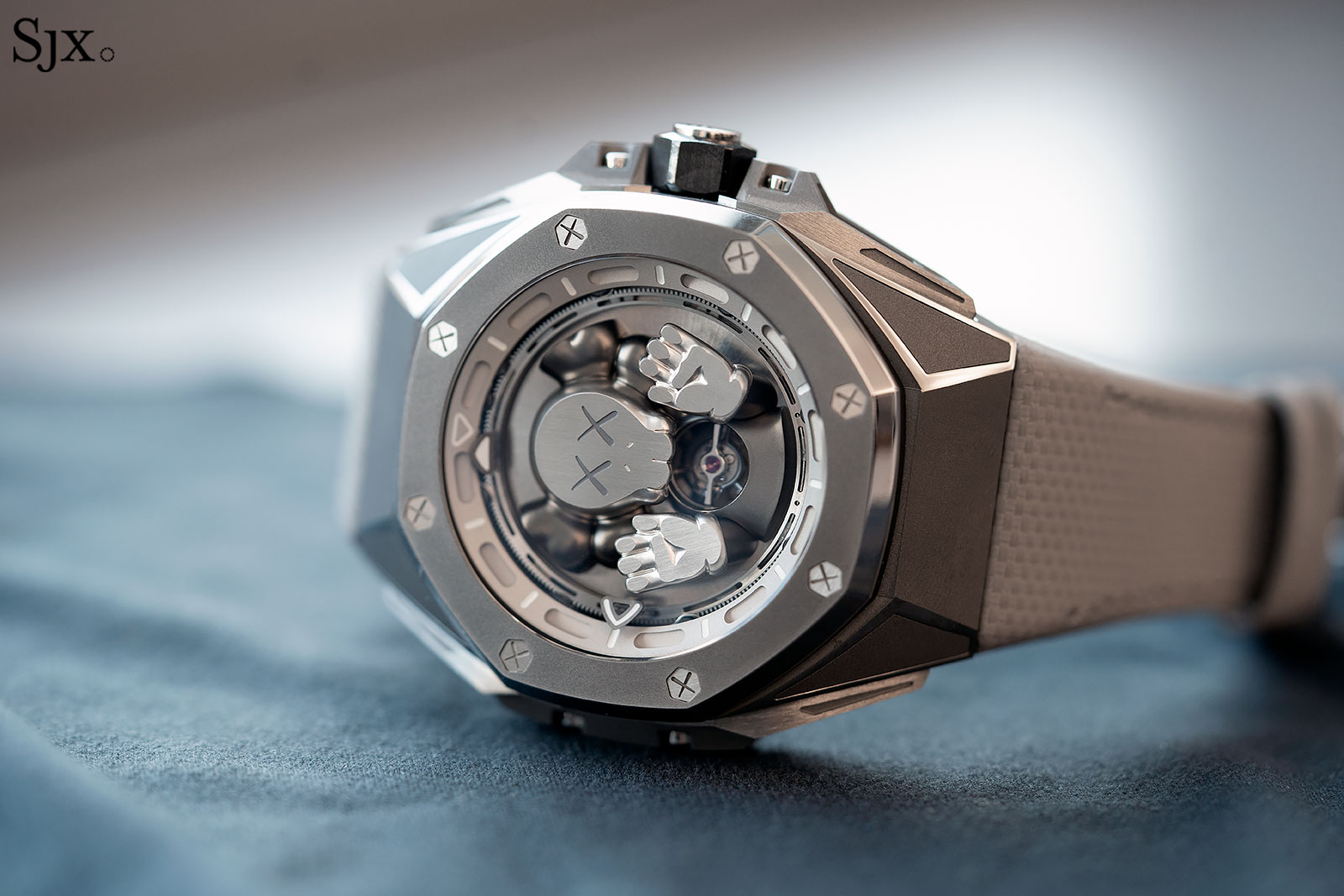
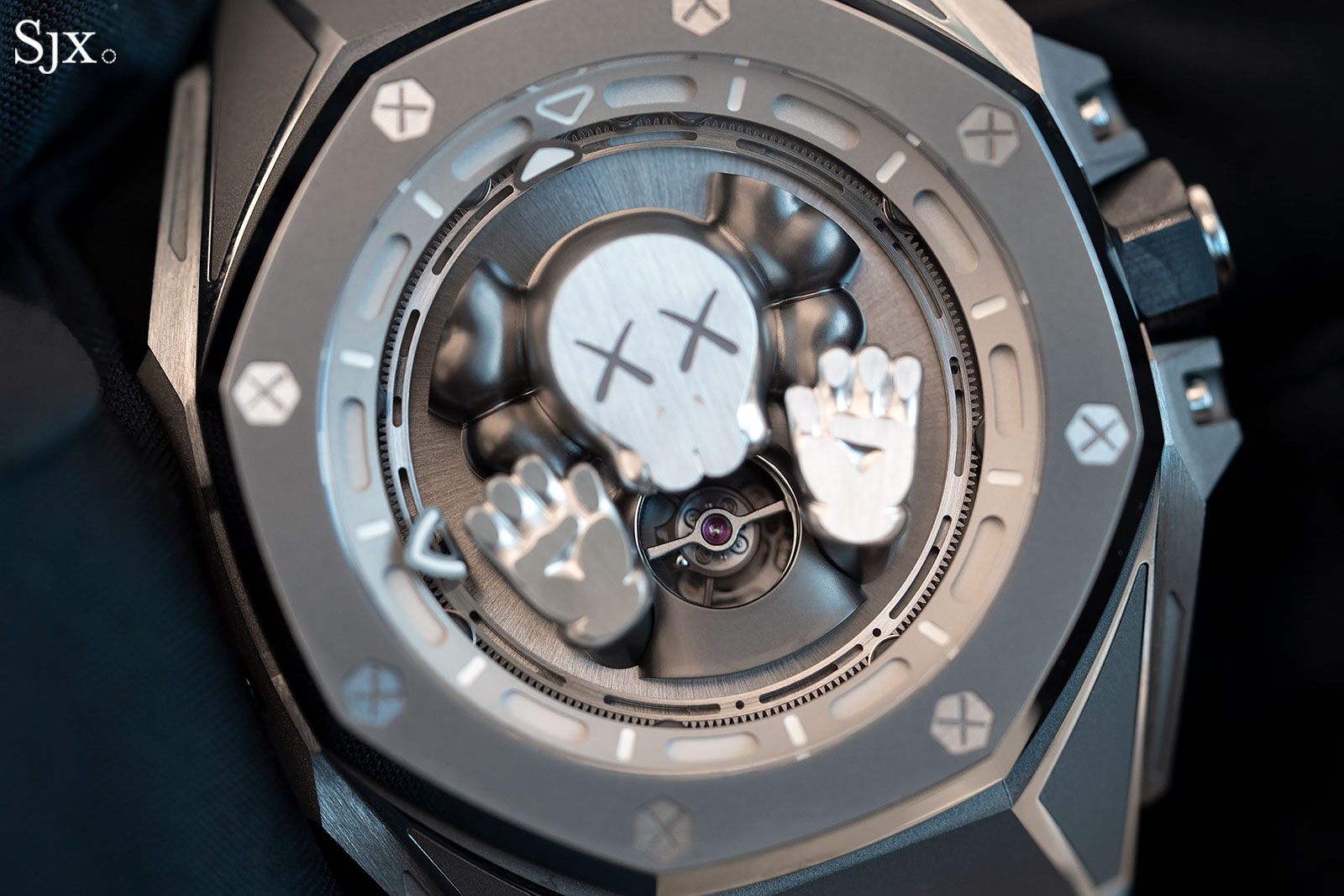
The Companion is literally that – a miniature version of KAWS’ signature character rendered in titanium. The cal. 2979 movement features peripheral hour and minute hands that orbit the companion itself, along with a tourbillon visible at six o’clock. The titanium case is a reasonable 43 mm in diameter, but it suffers from a 17.4 mm thickness and an overly long lug-to-lug length, which makes me think it was designed with professional athletes in mind.
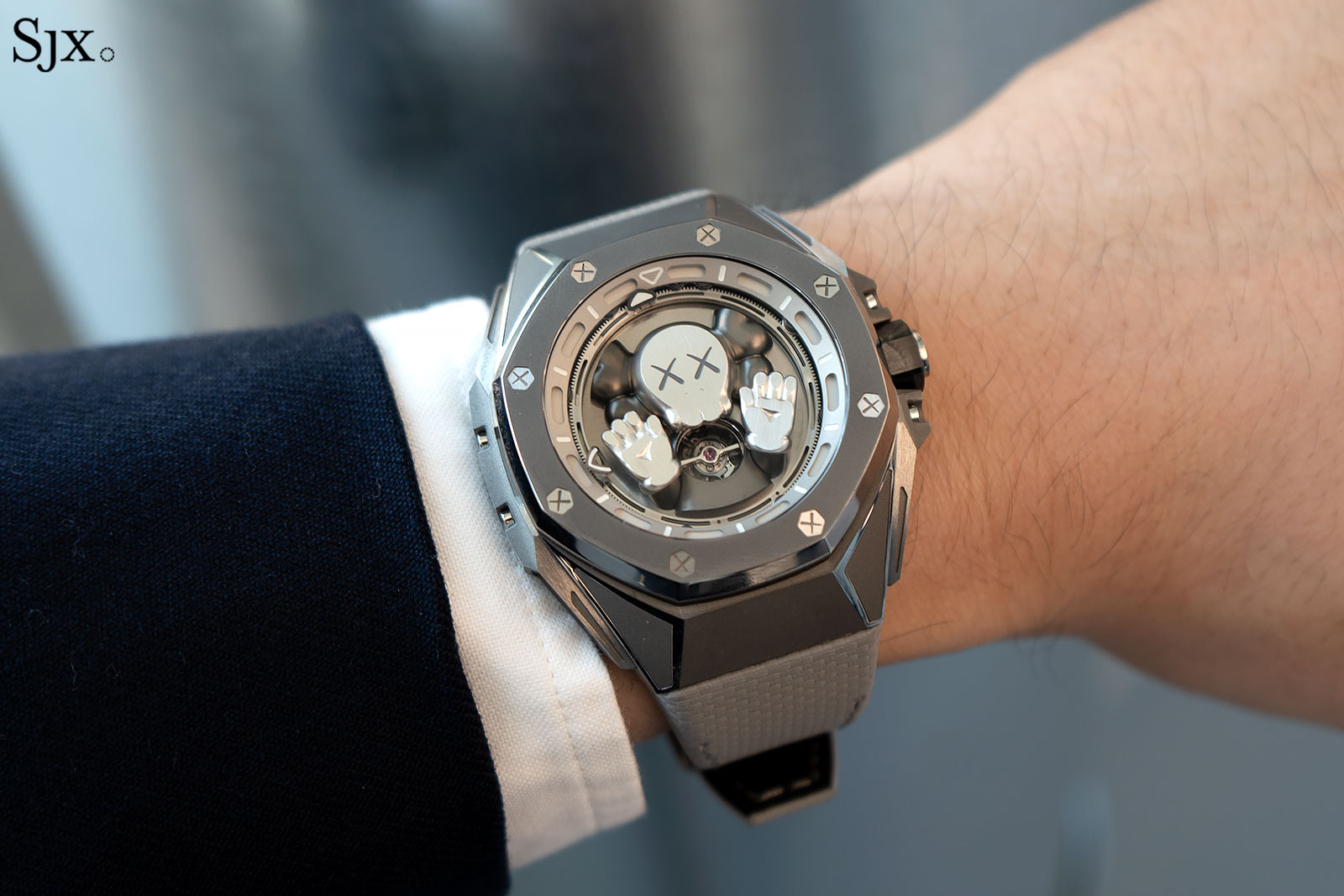
Priced over US$200,000, the Companion is the kind of watch you’re likely to see on the wrists of the brand’s celebrity clients at events like Art Basel Miami. In other words, it’s not for everyone. But the same can be said for KAWS’ artworks, which stoke both love and hate within the art world. This tension is part of what makes this provocative collaboration so interesting.
Greubel Forsey is back in form after a leadership shake-up that saw control revert to back to the brand’s founders. Widely respected for its maximalist approach to construction and finishing, Greubel Forsey recently debuted a new version of the GMT Balancier Convexe that takes the original concept and scales it down to a more wearable size of about 43 mm (depending on where you measure). Arguably the most finely finished sport watch in the industry, the GMT Balancier Convexe is a tour de force of design and craftsmanship.
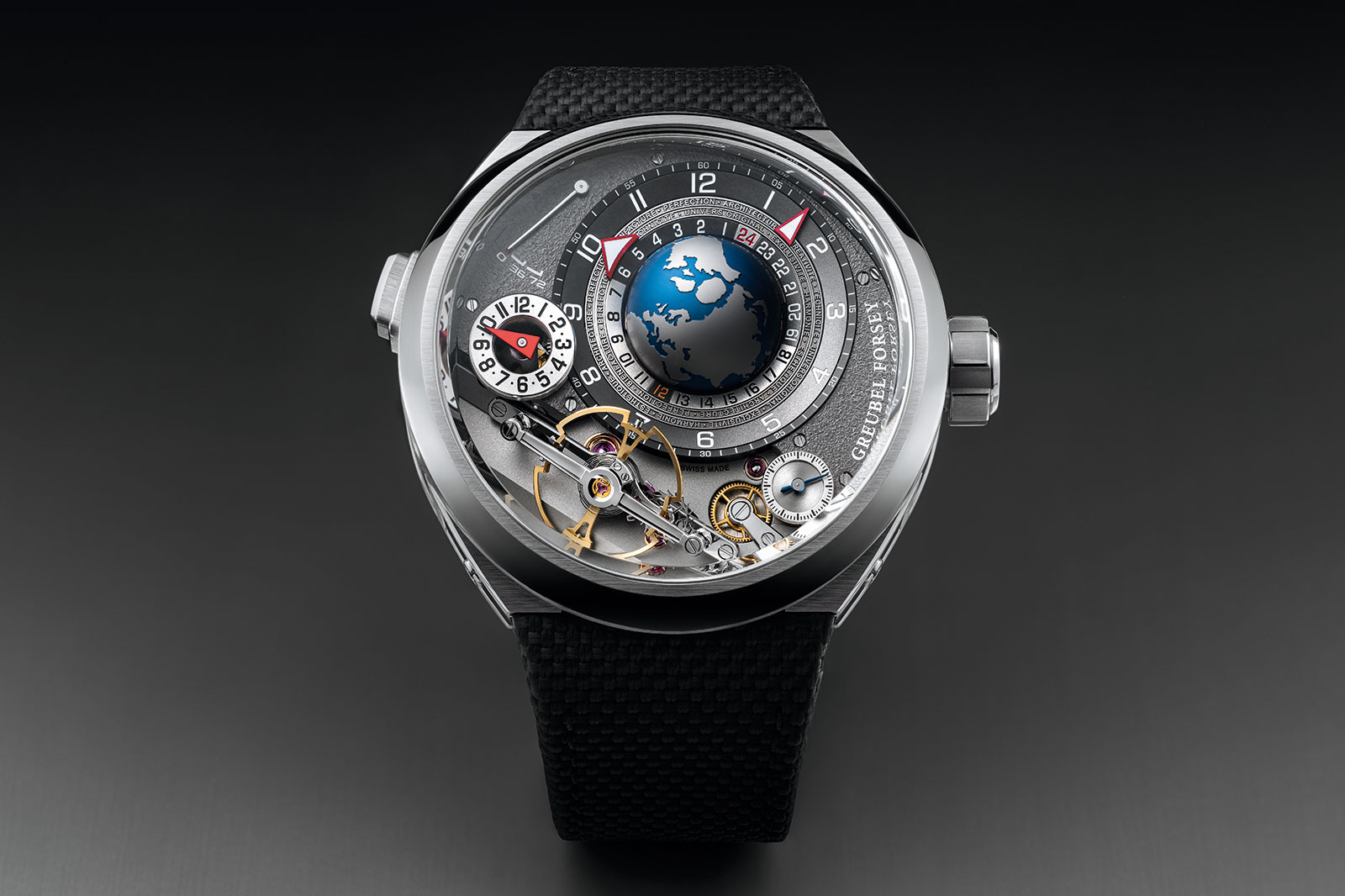
The big news here is, somewhat ironically, the smaller case, which has been downsized to 42.9 mm at the mid-case. If that still sounds large, keep in mind the GMT features a very short lug-to-lug length and a proprietary strap that helps hug the wrist.
Functionally, the new version is the same as the original and feature a push-button hour jumper for crossing time zones, and even factors in daylight saving time using a two-tiered scale visible through the case back.
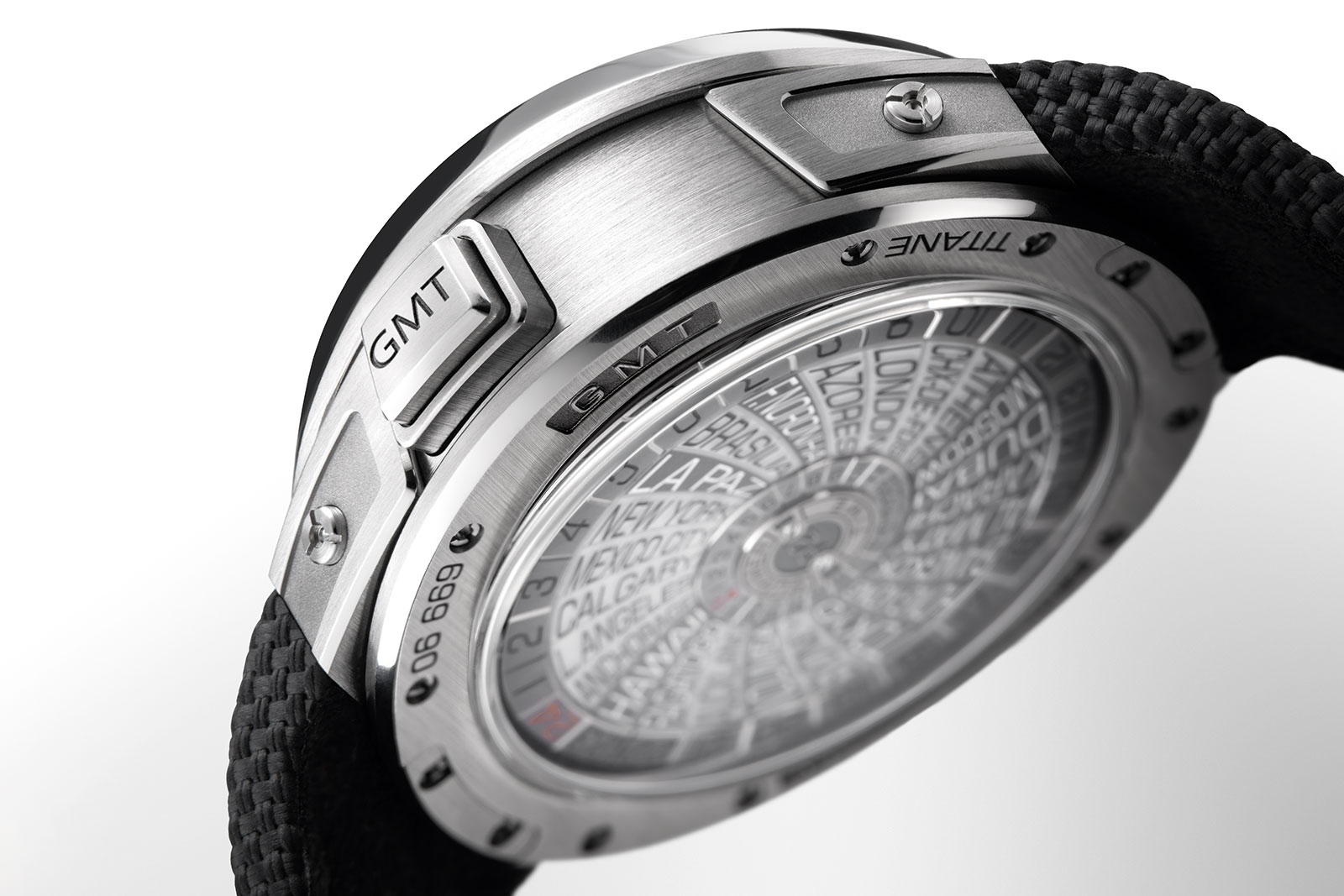
Functionality aside, the movement is an absolute visual spectacle, with generous amounts of black polished steel. The bridge supporting the inclined free-sprung balance is the star of the show, featuring rounded arms and perfectly crisp, symmetrical inner angles at each end.
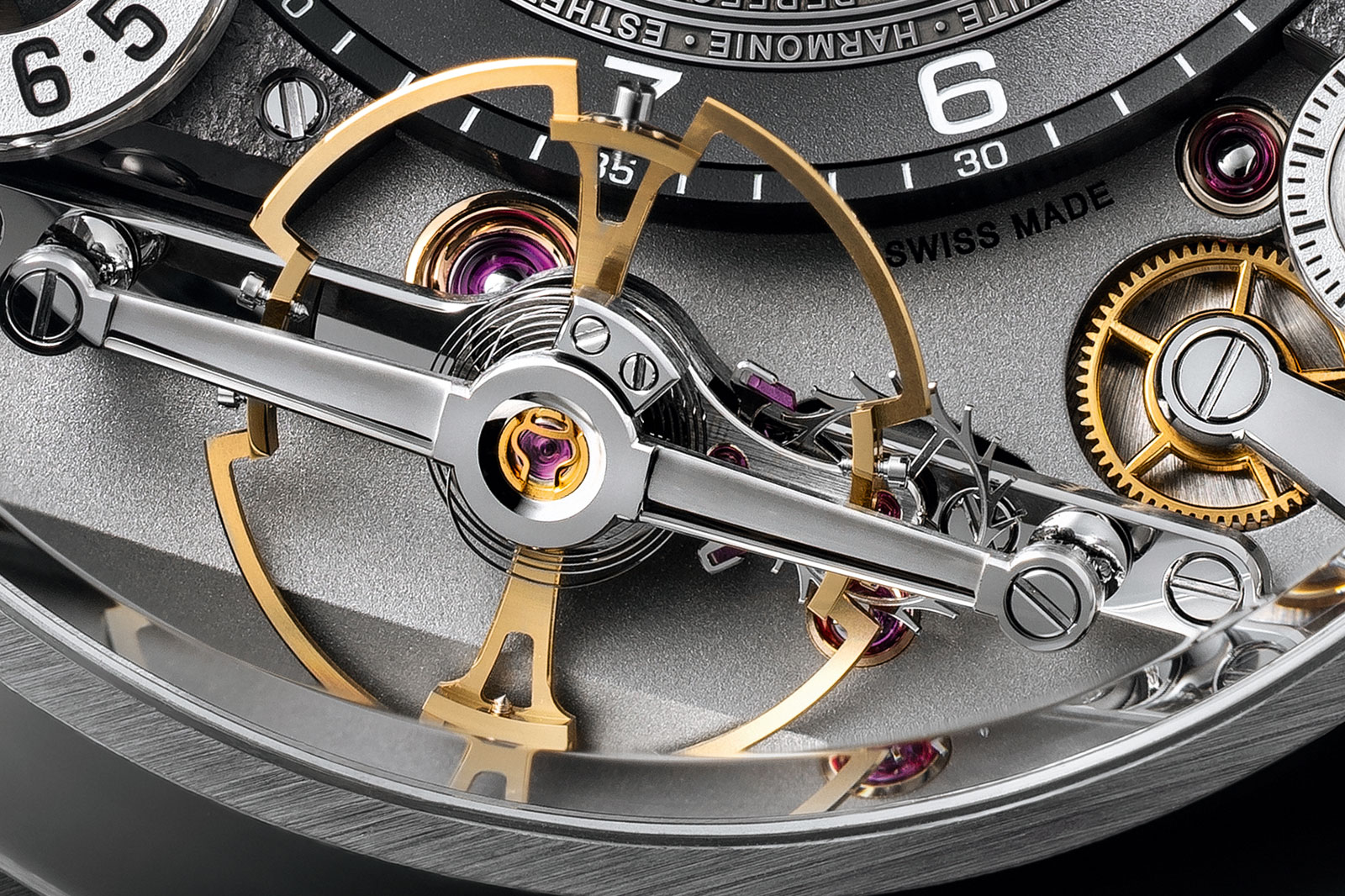
For traditionalists, it doesn’t get any better than this. But watches don’t get much more expensive than this either – at over US$400,000, the GMT is a perfect capstone for our list of summer watches.
Back to top.




